KAI TAHU NAMES OF THE MONTH
From this edition onward, Te Pānui Rūnaka will be using the Kāi Tahu names for the months of the year on the front of our publication. This change reflects our ongoing commitment to uphold and celebrate Kāi Tahu reo, mātauraka, and identity.
The names of the months in te reo Māori vary across iwi, and the Kāi Tahu dialect carries unique expressions that connect deeply to our whenua, our seasonal rhythms and our stories. By using these kupu, we honour the richness of our reo and the distinctiveness of our takiwā.
Ngā Marama o te Tau – Kāi Tahu Month Names
Gregorian Month Kāi Tahu Name
Gregorian Month Kāi Tahu Name
January Iwa July Toru
February Kahuru August Whā
March Kahuru-kai-paeka September Rima
April Kai-te-haere October Ono
May Mātahi-ā-te-tau November Whitu
June Maruaroa December Waru
CALL FOR COVER ART SUBMISSIONS
Kia ora e te whānau, if you would like your artwork to be featured on the cover of Te Pānui Rūnaka, please submit it via email to: tpr@ngaitahu.iwi.nz
Ōtāwiri
nā Te Aotahi Paihana Rangipunga Rice-Edwards (Ngāi Tahu – Ngāti Irakehu – Te Āti Haunui-a-Pāpārangi –Ngāi Hāua – Ngā Rauru)
“Taku pane ki uta aku waewae ki tai taku kāika ki Ōtāwiri e tau nei.”
Te Pānui Rūnaka uses vegetable based inks and environmentally responsible paper produced from Forest Stewardship Council® (FSC®) certified, Mixed Source pulp from Responsible Sources.
Printed by Blue Star NZ who are Toitū enviromark gold and a Toitū carbon reduce certified organisation, actively managing their impact on the environment.
Whakahaerehia e Ruruku Ltd (Ngāi Tahu Pakihi Whānau).
Nā te Kaiwhakahaere
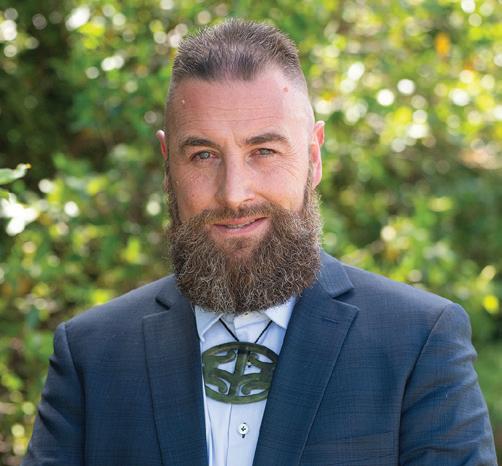
Whatu ki ruka, whatu ki raro
Whatu ki ruka, ki kā mauka whakahī
Whatu ki raro, ki kā wai tuku kiri
Ka pō, ka ao, ka awatea
Kai aku whakatamarahi ki te raki, kai aku whakateitei ki te whenua, nāia te reo whakamiha e rere kau atu ana ki a tātau katoa.
Mātua rā ko kā mihi ki a rātau mā nā rātau te huanui i para hai whai ake mā tātau, e moe, e oki, e tau.
Hoki tū mai ki a tātau te kanohi ora, tātau te urupā o rātau mā tēnā rā tātau.
Tēnā hoki tātau i kā huhua kaupapa, i kā whakapauka kaha, i kā mahi e mahia ana e tēnā, e tēnā o tātau puta noa i ō tātau takiwā, i te motu me te ao whānui anō hoki.
Kāore i ārikarika kā whakamānawa ki a tātau katoa.
At Hui-ā-Iwi last November, I spoke about the need to get our house in order. I said then that Te Rūnanga o Ngāi Tahu was a young institution, still growing and still learning, and that if we were serious about building a future worthy of our tīpuna and our mokopuna, we needed to take a good look at ourselves.
Since that time, we’ve done exactly that.
Over the past year, Te Rūnanga Group has been on a journey of reflection and recalibration. We’ve confronted some uncomfortable truths about the way we’ve been operating, particularly around how we manage and
distribute our tribal pūtea. The reality is, we were spending more than we were earning. And while that may have been driven by good intentions, it wasn’t sustainable. It wasn’t aligned with our whakataukī, mō tātou, ā, mō kā uri ā muri ake nei.
Leadership meant facing that reality head-on. So we did. We made the call to impose a distribution cap. We supported the CEO in initiating a change process across the Office. We began a review of our Investments Charter. And we committed ourselves to building a more sustainable foundation for the future.
This hasn’t been easy. It’s meant change, challenge, and sacrifice. But it’s also meant clarity. Because at the heart of this journey is a simple truth: we must balance the needs of today with the responsibilities we carry for tomorrow.
That’s the essence of what we’ve come to call “the big balancing act.” It’s the challenge of ensuring that our pūtea serves both the living and the unborn. That we don’t rob the future to pay for the present, nor deny the present in service of the future. It’s a tension that every generation of Ngāi Tahu governors has grappled with, from the early days of the Ngāi Tahu Trust Board to the present day.
For those interested in understanding this journey more in depth, a reflective article co-authored by Professor Mike Stevens (Te Rūnanga o Awarua representative) and the Chair of the Audit and Risk Committee offers valuable insight. Mō Tātou? Mō Kā Uri? Our Big Balancing Act,
is included in this edition of Te Pānui Rūnaka and as a thoughtful contribution to ongoing kōrero.
All of this has taken place against the backdrop of a shifting political and cultural landscape. At Waitangi this year, I spoke about the challenges we are facing as iwi Māori, about the strain on the Treaty relationship, the rise of shallow political narratives, and the need to defend our rangatiratanga with clarity and conviction.
In times like these, institutional strength matters. It is not just about governance or finance, it is about identity, presence, and purpose. It is about ensuring that Te Rūnanga o Ngāi Tahu can stand firm in the face of uncertainty, speak with authority on behalf of our people, and act with integrity in pursuit of our collective aspirations.
That is why this moment is so important.
We are now preparing to transition into Mō Kā Uri –Kāi Tahu 2050, our next 25-year tribal strategy. This marks a new chapter in our journey, one that builds on the legacy of our tīpuna and sets a course for our mokopuna. It is a strategy grounded in our tikanga, shaped by our story, and driven by our commitment to serve. Mō Kā Uri asks us once again to take a hard look at the way we are currently operating, and to consider what changes we might need to make to ensure our actions are aligned with the vision it sets out.
PUBLICATIONS DISTRIBUTION UPDATE
From September onwards, we’re updating how we distribute Te Pānui Rūnaka (TPR) and TE KARAKA (TK). Printed copies will continue to be posted to subscribers aged 60 and over
All other subscribers will now receive their editions digitally and can access them online.
Rūnaka offices will continue to receive hard copies for all whānau to access.
As we step into this new phase, I want to acknowledge all those who have contributed to the journey so far, our kaimahi, our leaders, our rūnanga, and our whānau. Your efforts, your insights, and your courage have helped us navigate a difficult path and emerge stronger for it.
We still have work to do. But we are on the right track. And as we move forward, we do so with a renewed sense of purpose, a clearer understanding of who we are, and a deep commitment to the generations yet to come.
Ngā mihi nui,
Justin Tipa Kaiwhakahaere, Te Rūnanga o Ngāi Tahu

Kaikōura Rūnanga
WHĀNAU SUBMISSION
Tēnā koutou
Ko Aoraki te maunga
Ko Waimakariri te awa
Ko Tākitimu te waka
Ko Ngāi Tahu te iwi
Ko Ngāti Kurī te hapū
Ko Kaikōura Whakatau te tipuna
Ko Hariata Whakatau te tipuna
Ko Hariata Pitini Morera te tipuna
Ko Miriama Pitini Morera te tipuna
Ko Rangi George Solomon Score te tipuna
Ko Rosemary rāua ko Wayne Rangi Solomon kā mātau
Ko tōna uri e tū ake nei, ko Amanda-Jane Solomon
Ko Isobelle-Rose rāua, ko Ethan, ko Lachlan, ko Nathaniel, ko Rohan tamariki.
Kia ora, ko A-J ahau
I tupu ake ahau i Oaro, ā, kei reira tōku tūrangawaewae.
It is with great joy I congratulate my eldest child on being admitted to the bar as a barrister and solicitor of the High Court of New Zealand. We are all so immensely proud of your dedication, strength, and courage, Isobelle-Rose. We admire, adore, and love you, our girl.
“Ko te pae tawhiti, whāia kia tata; ko te pae tata, whakamaua kia tīna.”
“Seek out distant horizons and cherish those you attain.”

Te Ora Haumanu
Over the past couple of months, we’ve been thrilled to embrace the planting season with open arms, putting approximately 5,000 native plants into the ground across two key sites!
The two sites we’ve focused on this season are well known to our team:
• Hikawaikura (Ngāi Tahu) – our biggest planting site
• Lower Hurunui (Environment Canterbury) – one of the first planting sites our team completed
Even though we’ve spent a lot of time at these locations, it’s always exciting to see new planting areas develop.

On top of all that, our kaimahi got the chance to join a pine planting team out in Culverden. It was a totally different vibe – fast-paced, big numbers, and a great way for the team to try something new and step out of the usual routine.

Te Ara Pūkenga – Round 3
We closed out this round on a high, finishing with a meaningful hīkoi – spending our final day travelling south through our takiwā, visiting significant pā sites and continuing the powerful storytelling of our shared history.
It has been a privilege to create a learning environment that has supported over 40 whānau members to walk away with valuable knowledge, recognised qualifications, hands-on training, and a deepened sense of connection, identity, and belonging. We’re incredibly proud to have played a part in this journey.

In true Te Ara Pūkenga fashion, we ended the round with a beautiful celebration evening – a special opportunity to honour the achievements of our tauira, surrounded by whānau, friends, managers, and our business partners.
To everyone who has contributed to this kaupapa –thank you. Your support has made this all possible.

The Bones of Our Past – A Documentary Honouring Ngāti Kuri
A powerful new documentary, ‘The Bones of Our Past’, is told through the voices of kaumātua, whānau, and uri of Ngāti Kuri. The film traces the incredible journey behind the building and survival of Takahanga Marae –from the ōhākī of Rangi Solomon to Tā Tipene O’Regan, from early fundraisers to whānau mortgaging their homes, and decades of cultural revival. It is a story of sheer determination, whakapapa, and aroha.
The documentary officially premiered at Takahanga Marae, where whānau, friends, and fund-holders gathered to witness the unveiling of their own history on screen. There were tears, pride, and laughter as generations saw their investors and their own stories honoured in a way many had never seen before.
This documentary is a taonga. It preserves the spirit of Takahanga, reminding us that marae are more than just buildings—they are whare kōrero, whare tangata, whare wairua—anchors of identity, mana, and connection.
To our Kāi Tahu whānau who have held us through the late nights and long days, to the dignitaries and leaders who have honoured us with your presence—we see you, we acknowledge you, and we are humbled.
A very special thank you to Maani S, Jacqui L, Cilla H, Rick H, and their incredible production team for your tireless effort in bringing this documentary to life. Through the late nights and endless meet-ups, you have helped us create a piece that will forever tell our story, and we are truly grateful.
Jacqui Te Wani
Pā Trustee – Takahanga Marae
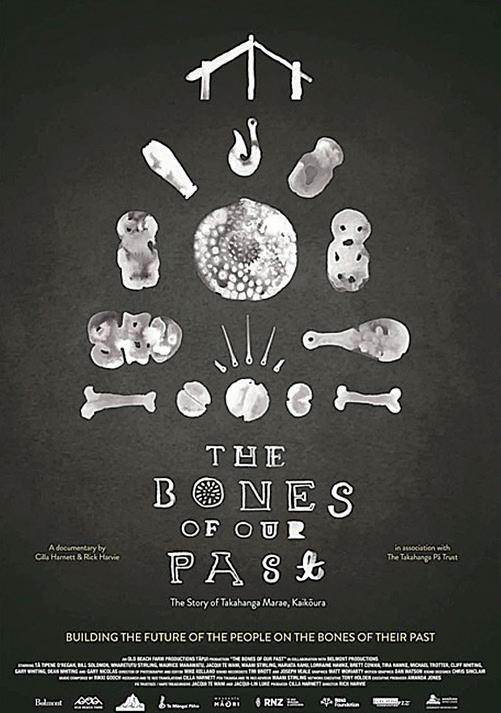
Te Hapū o Ngāti Waewae
A big mihi to everyone celebrating their birthdays in the months below!
If your birthday isn’t listed, please reach out to the office and we’ll make sure to add you to the list.
September
Fin Tauwhare, Leighton Stokes, Amanda Tainui, Chantal Tumahai, Terita Mason, El-Alamein Meihana-Whittle, Kaleshea Tauwhare, Marlon Price, Chris Lewis, Kerelopa Ria, Irai Weepu, Mikayla Tumahai, Kupe Tauwhare, Tania Tauwhare, James Campbell, Moana Lee, Tamaki Tumahai, Chelsea Meihana, Awatea Tauwhare, Tina Weepu, Maighdlin Hinekoau Jones, Miriama Johnsen, Miriam Downs, Hector Tainui, Ariana Stevens, George Read, Marina Russell, India Lilly Campbell, Polly Mei Campbell, George Simpson, Archie Downs, Kōwhai Weaver, Connor McLaughlin, Kōwhai Te Kapuarangi Āio.
October
Tania Hutana, Theresa Rooney, Milly Campbell, Wiremu Weepu, Courtney Sargent, Jamie Meihana-Whittle, Ariana Tainui, Rosemarie Tainui, Kelly Mason, Arana Sutton, Te Aotaumarewa Meihana-Eiffe, Maia Tonihi, Tioti Campbell, Gaylene Culling, Te Ngarahau Mason, Chance Beckett-Ria, Jo-anne Coakley (Millie), Sophie Tiller, Tessa Treadgold, Tom Downs, William Simpson, Davida Simpson, John McLaughlin.
Achievements
Mason Tūhuru | U15 Dsoxs Softball Tour in Brisbane
We are so proud of Mason Tūhuru for his selection into the Dsoxs Under 15 Softball team!
The squad had a packed schedule in Brisbane, with 7 games played over 3 days, plus a full day dedicated to skills and fitness testing. The Dsoxs performed strongly, winning 5 games and losing only 2. Mason contributed in a utility role, covering 6 different positions across the 5 games he played.
Mason would like to give a huge mihi to Ngāi Tahu for the grant he received and to his whānau for supporting his fundraisers. With their financial support, it’s made Mason’s dream of playing for NZ possible. Congratulations Mase a.k.a Maui!
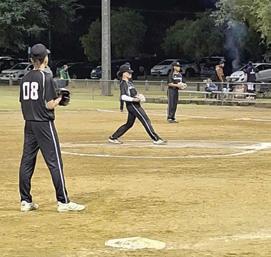


NZ U18 National Netball Championship | Ani Mason & Isabelle Maiava
Huge congratulations to Ani Mason and Isabelle Maiava for their outstanding achievement in being selected to represent Te Tai o Poutini at the New Zealand Under 18 National Netball Championships! They were chosen from across the Buller, West Coast, and Hokitika Netball Centres. We are all so proud of you both. Ka mau te wehi!


Junior Crusader Camp & Junior Heartland Team | Joe Tauwhare
We are proud to celebrate the achievements of Joe Tauwhare. Joe was selected from among many talented players across the Nelson, Marlborough, West Coast, and Buller districts to train in the U18 Junior Crusader Camp and has also earned a spot in the West Coast Heartland U18 Team. Awesome mahi Joe!
Below: Joe Tauwhare in action.

Taureti Tū ki Arahura
Our Poutini Ngāi Tahu kaumātua have had another successful year of their weekly Taurite Tū classes. Each Thursday morning, Aroha and Elly hold a leg strengthening and balance exercise class for our kaumātua here at Arahura Marae, followed by a kai prepared and cooked by our kitchenhand, Tania Wallace.
We have also had the pleasure of having special guests facilitate such as Maia Tonihi and Crystelle Mason!
The positive feedback we have received since commencing has been incredible and our kaumātua look forward to class every single week. Over the last 12 months our class has grown rapidly and we have since reached full capacity!
We can’t wait to see where the next 12 months takes us and continue watching the improvement of our kaumātua.
Below: Kaumātua enjoying Taurite Tū at Arahura Marae.

Rūnanga Hui & AGM 2025 – Save the date!
Te Rūnanga o Ngāti Waewae warmly invites you to our Annual General Meeting followed by our Rūnanga hui, which will be held on 30 November at 12:30pm at Arahura Marae. Join us for kai at 12:00pm, with hui to follow at 12:30pm.
Rūnanga Business
If you have any Rūnanga Business queries including Whakapapa Registration forms, please contact our Rūnanga Administrator: Aleigha –Aleigha.Ngaamo@ngaitahu.iwi.nz or 027 755 6451.
If you have any Marae bookings or queries, please contact our Marae Manager: Miriama –Events@ngatiwaewae.org.nz or 03 755 6451.
Keep in the loop
You can keep in the loop with our upcoming wānanga and events by:
• Joining the Poutini Ngāi Tahu and Arahura Rūnanga pages on Facebook
• Registering at: www.ngatiwaewae.org.nz for access to our whānau portal with resources, updates and upcoming events
• Providing your email address and/or phone number to Aleigha for Rūnanga Comms.
Te Hau-ā-Uru Kapa Haka
Te Hau-ā-Uru is a newly formed kapa haka group, bringing together students from Buller, Westland, and Greymouth High Schools, alongside passionate rangatahi from across the West Coast.
This rōpū was created by the vision and dedication of members of the Ngāti Waewae Rangatahi Komiti – Whakataerangi White, Aleigha Ngaamo, Ani Mason, Amo Tamainu, Henare Mason, Dani Tainui, and Anaru Tainui.
There is a significant gap in the West Coast for rangatahi to embrace and express their Māori identity. The end-goal in forming this rōpū is to ensure that the practice of kapa haka continues to thrive for the next generation living on Te Tai o Poutini.
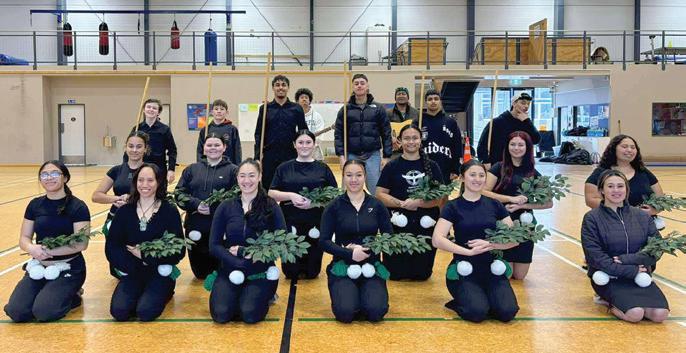
This December, Te Hau-ā-Uru will proudly represent the West Coast at the Moana Pounamu Festival in Christchurch. They will be doing a dress rehearsal/fundraiser on October 18 at 6:00 PM at the Hokitika Regent Theatre. If you’re in our neck of the woods, be sure to check them out!
Te Ngāi Tūāhuriri Rūnanga
Halo Hoeta Kotara
Halo Hoeta Kotara was honoured to be chosen as Deputy Head Girl for her final year at Chisnallwood Intermediate. During the school holidays, she travelled to China for the One World Education Panda Camp, where she immersed herself in cultural exchange, explored the country, and learned about its rich history. We are incredibly proud to see our tamariki achieving at such a high level and embracing leadership opportunities in their education.

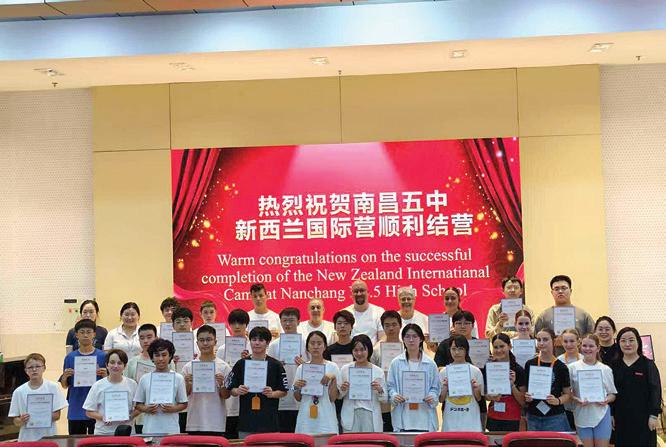
Azarlia Hoeta Kotara
Azarlia Hoeta Kotara travelled to the Gold Coast, Australia, during the school holidays to take part in the International Netball Festival. She represented her club, Kia Toa Netball U14, as well as Aotearoa, competing against teams from Australia and Fiji in a five-day tournament. Her team finished strong, placing second in their grade. Azarlia has also been selected for the Canterbury Bulls League Squad for U14 kotiro—another incredible achievement. We are proud to see our next generation reaching such high levels in their sporting journeys.

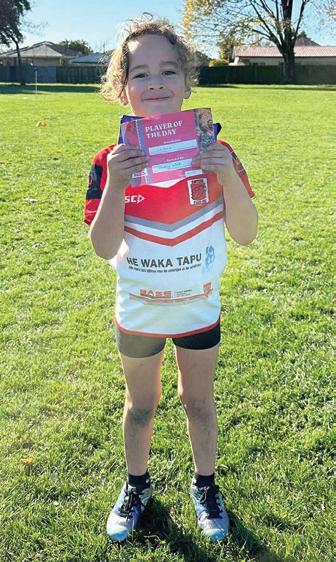

Havana Hoeta Kotara
Havana Hoeta Kotara is five and a half years old and has just started her first year at St Albans School in the bilingual unit. This is also her first season playing Rippa Rugby for the Eastern Eagles. Following in her sisters’ footsteps, Havana is already showing a strong love for sports.

Te Hapū o Ngāti Wheke
In Loving Memory – Joan (Sal) Hinepakia Rakena (née Grennell)
It is with deep aroha that the Rakena whānau acknowledge the peaceful passing of our beloved kuia, Joan (Sal) Hinepakia Rakena (née Grennell), on Monday 7 April, aged 96 years. Sal passed away peacefully at Essie Summers Rest Home with whānau by her side. A treasured mother, grandmother, and great-grandmother, she carried the wairua of our people with grace, wisdom, and unwavering strength. Her warmth, humour, and dedication to whānau and kaupapa Māori will be deeply missed but forever remembered. She now rests at Rāpaki with her beloved husband, Rakena (Kena) Piripi Rakena.
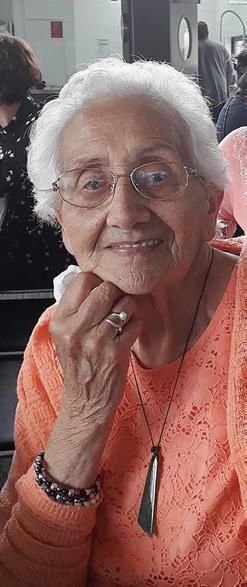
In loving
Moe mai rā e te whaea, e te kuia, haere atu rā ki te okiokinga mutunga kore.
Recent Graduation
Fraser McConnell, son of Tama and mokopuna of Ri McConnell, graduated in June from Te Herenga Waka – Victoria University with a Master’s degree in Electrical Engineering.
Fraser’s graduation celebration.

Couch Whānau Sporting Achievements in Canada
Matua Donald Couch and wife Dorothy returned from their annual trip to see whānau in Canada with some extra sporting experiences this time. Mokopuna Kalan Couch, now entering his final year at the University of Toronto, is a member of the university’s Rowing Eight. He returned to British Columbia to compete with his sister in the Vernon BC Rowing Regatta at Swan Lake in the Okanagan Valley. Kalan finished second in the individual men’s single 500m sprint. His sister, 13-year-old Kirianne, received an award as the youngest competitor at the regatta.


Meanwhile, their cousin Maren Couch graduated from Grade 12 High School and on Canada Day (July 1) played for a Western Canada women’s cricket team against a team representing Eastern Canada. These were the best women cricket players in Canada. Maren is a member of the British Columbia provincial team. As well as her Ngāi Tahu heritage, through her mother Maren is also of Chalath First Nations and a member of the Seton Lake Band.
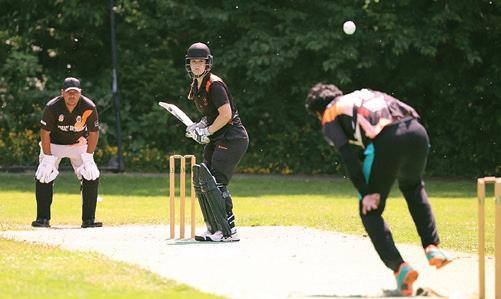

Other News from Rāpaki
The build of the Rāpaki Office and Conference Centre is still on track and on budget for completion by January 2026. At the time of writing, the roof was on and walls and windows were going up.

Busy Kaumātua
Our kaumātua have been out and about having fun, connecting with whanaunga and friends, and making more memories. There was a Matariki lunch and entertainment at Ngā Hau E Whā with kaumātua from other rūnanga, a lovely day at Tuahiwi Marae hosted by our Tūāhuriri cousins, and a fun time at the ten-pin bowling challenge with our Wairewa cousins followed by lunch at Armadillos. Then I’m guessing there were a few “nanna naps” after all that exercise and laughing, lol. The looks on the faces of first-time players hitting those strikes were priceless.


Whānau Communications
Whānau members, if you don’t already receive our email pānui, please join our mailing list by sending your email to: rapaki@ngaitahu.iwi.nz
Follow our public page on Facebook: Ngāti Wheke Facebook Page and ask to join our private Facebook hapū rōpū.
Te Taumutu Rūnanga
Tamariki Day
As the year quickly rolls on, we look forward to sharing mātauranga with our tamariki about Matariki.
Matariki is a time for planting, symbolising new beginnings, renewal, and connection to the land. Planting during Matariki is a way to honour ancestors, celebrate the new growing season, and reflect on the past, present, and future. It’s an opportunity to reconnect with traditional practices and strengthen ties to the environment.
Our tamariki learned about Tupuānuku and the connection to food grown in the ground and the harvest.
Hauhake tū, ka tō Matariki
Lifting of the crops begins when Matariki sets.
Here’s why planting is significant during Matariki:
• New beginnings: Matariki marks the start of a new cycle of planting and harvesting, signifying renewal and growth.
• Connection to ancestors: Planting is a way to honour and remember ancestors, connecting with their traditions and wisdom.
• Respect for the land: It is a practice of kaitiakitanga (guardianship), acknowledging the importance of caring for Papatūānuku (Mother Earth).
• Community engagement: Planting events bring communities together, fostering a sense of unity and shared purpose.
• Reviving traditional knowledge: Matariki encourages the integration of traditional Māori agricultural practices, like companion planting and sustainable farming.
• Symbol of resilience: Planting native trees, particularly, can symbolise resilience and contribute to the restoration of natural ecosystems.
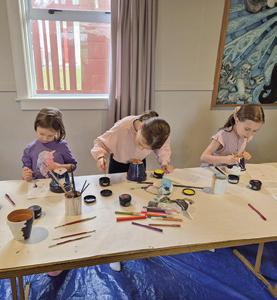
What to Plant:
• Native trees: Consider planting native trees like those supported by the Matariki Tu Rākau programme, which are often planted as living memorials.
• Vegetables: Planting vegetables, especially those associated with Matariki, such as kūmara (sweet potato), is a traditional practice.
• Seeds: Saving and planting seeds is a great way to connect with the land and preserve local varieties.
How to Get Involved:
• Community Planting Events: Check for local Matariki planting events organised by community groups, schools, or marae.
• Planting at home: Even a small garden can be a place for reflection and connection with Matariki principles.
• Learn about traditional practices: Explore resources and workshops that teach about Māori gardening techniques and the significance of Matariki in agriculture.
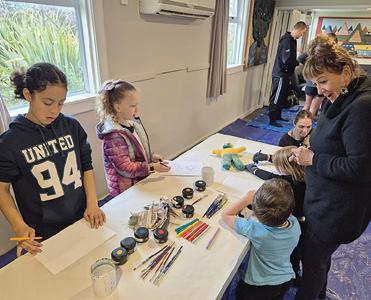
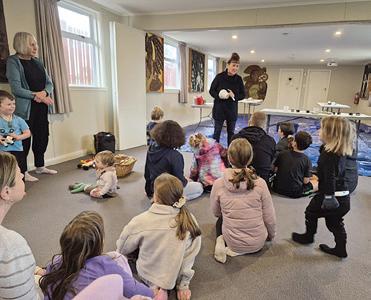
Shortland Collection
Sometimes, opportunities just can’t be missed –no matter how tired you are or how over airports you feel. The chance to spend time with your favourite people and get up close and personal with taonga created and worn by our ancestors was too good to pass up.
In 1997, at Takahanga Marae in Kaikōura, the Heads of Agreement committing both the Crown and Ngāi Tahu to settling Te Kereme was signed. At the signing, the then Prime Minister, Jim Bolger, presented the Diss Collection to Ngāi Tahu as a sign of good faith.
The original collection, made up of 10 pieces of pounamu – a hei-tiki, seven pendants, one small slice of pounamu, and a set of beads – was acquired by Geoffrey Diss at an auction in Cumbria, UK, in 1950. He gifted it to New Zealand in 1984.
The collection was formerly owned by Dr Edward Shortland, Sub-Protector of Aboriginal people in the 1840s and author of The Southern Districts of New Zealand.
Last week, the collection – now referred to as the Shortland Collection – was returned to the iwi by Southland Museum, who have been caring for it on our behalf.
We were privileged to be on the marae at Awarua to welcome our pounamu home, to learn about Edward Shortland, the political context in which he operated, the ancestors he travelled with and collected information from, and the whakapapa of the pounamu. Thank you, Awarua, Te Pae Kōrako, and Ngāi Tahu Archives. Special thanks to Puamiria Parata Goodall for the photos.


Whānau Communications


We also send out a bi-monthly e-pānui and other important communications to our whānau via our whānau emailing list. If you would like to be added to the list, please email us at: Taumutu@ngaitahu.iwi.nz
Wairewa Rūnanga
White Ferns
On Sunday 1 June, we had the privilege of welcoming the White Ferns (Aotearoa’s national women’s cricket team) to Wairewa Marae. Their visit was part of the ‘Whare’ framework they’re working on as they prepare for the upcoming women’s cricket tournament later this year.
It was a beautiful chance to connect, kōrero, and share space together. A special moment was discovering that one of the players, Lea Tahuhu (known for bowling at lightning speed!), has whakapapa to Wairewa through her father, the late Andrew Tahuhu. We also took time to reflect on the legacy of Ana Rouse (née Tini), the first Māori woman to represent Aotearoa in the national women’s cricket team – a true example of mana wahine.
Ngā mihi to the White Ferns for making the trip out to us, and best of luck for the season ahead!

Whānau Pānui
A huge congratulations to Metua Cranwell (daughter of Iaean and Keela Cranwell) for placing third overall in Pei Te Hurinui at Ngā Manu Kōrero in June. Not only is she carving up the stage, she’s carving up the field too!
Metua was selected for the Under 18 Girls’ North v South rugby match in July, she’s representing her school rugby team in the South Island 10’s and the Condor 7’s, and has been selected to play in the NZ Māori U17 rugby league team 2025 – the only member from Te Waipounamu!
Poho kererū! We’re so proud to see you shining in every space you step into, Metua!

Sod Turning at Wairewa
On Monday 16 June, we gathered for a special ceremony to mark the installation of a long-awaited Onsite Wastewater Management System (OWMS) at our marae. This milestone has been over four years in the making and is the result of strong collaboration between the rūnanga and Crown research entity NIWA.
The day began with karakia, the sound of the pūtātara, and the presence of whānau across generations. Together, we acknowledged the collective mahi, aroha, and kotahitanga that has upheld this kaupapa from the beginning.
The new OWMS is a vital piece of infrastructure for our marae and reflects our commitment to kaitiakitanga. Designed with a balance of mātauranga Māori and modern environmental engineering, the system uses natural processes, native organic materials, and environmental factors to treat wastewater. The untreated wastewater is released in measured quantities and passes through three filtering beds: a vertical wetland, a wood chip bioreactor, and an eco-trench.
This system not only meets a practical need but also demonstrates our values in action, ensuring our taiao is protected for future generations.
Matariki Hautapu
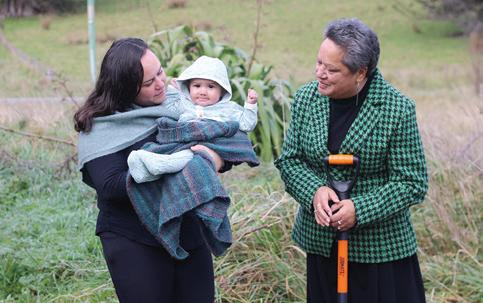
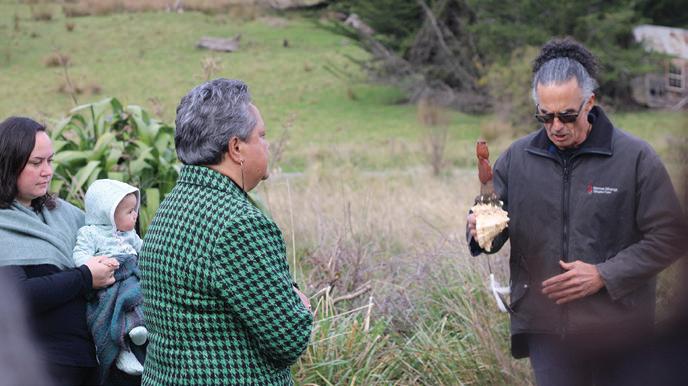
On the morning of Friday 20 June our whānau gathered in the still darkness of early morning to welcome the rising of Matariki and Puanga.
It was cold, but the warmth of the people, the karakia, and the kaupapa made it something special. Our hautapu was a beautiful moment of reflection, remembrance, and renewal. Smoke curled up into the sky as we released our thoughts and acknowledgements to those who have passed and offered our hopes for the year ahead.
It was a grounding, moving, and powerful way to start Matariki. Afterward, we made our way back to the marae where the wharekai was alive with the smell of hot kai and the sound of kōrero flowing. Tamariki ran around the marae, full of energy despite the early start, and there was a real sense of connection and calm as we shared breakfast together.
He wā whakahirahira. A meaningful morning spent reconnecting with each other, our whenua, and our stars.
Ngā mihi o te tau hou!

Mana Tangata Matariki Series
This year, Mana Tangata celebrated Matariki with a series of kaupapa, creating opportunities for whanaungatanga across all ages.
Activities included Paint and Sip sessions for rangatahi and kaumātua, a pakeke soak at He Puna Taimoana, and arts and crafts for our tamariki during the school holidays. It was a beautiful way to honour the rising of Matariki and Puanga, spend time together, and come into the new year surrounded by whānau, laughter, and aroha.


Reconnection Wānanga Dates
We have two dates set for the reconnection wānanga for 2025:
• 26-28 September
• 31 October –2 November
Our reconnection wānanga are an awesome way for whānau to come and hear about the history of Wairewa, reconnect with our marae and other Wairewa whānau, and learn about Wairewatanga.
If you’re interested in coming along to one of these wānanga, please email Wairewa.comms@ngaitahu.iwi.nz for more information.

Whakapā mai
0800 WAIREWA (924 7392) PO Box 10020, Christchurch, 8145 wairewa@ngaitahu.iwi.nz
Email Wairewa.comms@ngaitahu.iwi.nz to sign up to our monthly newsletter.
Like and follow us on Facebook to keep up-to-date with Wairewa! Facebook.com/Wairewa

Scan the QR code to take you to the Wairewa FB page.



Ōnuku Rūnanga
Dr Kelly Tikao
Dr Kelly Tikao was recently awarded the Fulbright – Ngā Pae o te Māramatanga Scholar Award 2025. Fulbright New Zealand – Te Tūāpapa Mātauranga o Aotearoa me Amerika aims to promote mutual understanding through educational and cultural exchanges.
Kelly will head to the Indigenous Health Sciences Department at the University of Hawai’i, West O’ahu in October this year for five months. She will carry out a short research project exploring native Hawaiian healing practices, particularly in the maternity sector. This research will provide more insight into the work she conducts here in the rejuvenation of customary Kāi Tahu birthing knowledge and practices alongside Māori midwives, artisans, and whānau.
Ōnuku contributed to a surprise celebration for Kelly, honouring her award and her mahi supporting whānau to have cultural options and resources in their birthing plans.
Maio Tikao Taratoa-Bannister
Maio Tikao Taratoa-Bannister recently competed in the 2025 Ngā Manu Kōrero ki Waitaha speech competition, representing his whānau whānui of Ōnuku Marae and his Te Pou o Tainui Marae of Ōtaki. This was his first time standing as a Year 11 on the senior stage. The event was held at Rangiora High School, where he competed against 17 other hopeful tauira Māori.
His topic was, “Talent is a flame, Genius is a fire”, and he lit up the stage with the comedic swagger and animated self we have come to know.
Maio was supported by the brotherhood of Ngā Tama o Ōruapaeroa (Shirley Boys’ High School), while also aware he could have claimed the same Korimako taonga his sister received four years prior. The pressure was on, and although he didn’t take it out this year—losing by just one point to the Year 13 Head Boy of Christ’s College – Maio’s interpretation of how to start an invisible lawnmower on stage and his energetic storytelling gained him second place in Korimako Prepared.
You can view his kōrero by searching Waitaha Ngā Manu Kōrero Speech Competition 2025 @ 2hr 50min into the performance.
Ōnuku Marae can be so proud of both Maio and Pewhairangi Morgan (1st in Sir Turi Carroll and third overall in Te Rawhiti Ihaka), plus Metua Cranwell and Tainui Pauling who also placed.
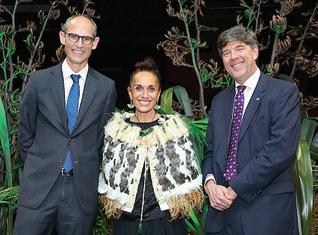

Wairaamia Tikao Taratoa-Bannister
Wairaamia Tikao Taratoa-Bannister is the Co-president/Tumuaki Haumi of the University of Canterbury Māori Student Association, Te Akatoki. She is also one of the Māori faces featured in the University of Canterbury’s 2025 Future’s Choices campaign, promoting the university to Māori and Pasifika students.
Wairaamia previously fronted the popular Believe You Can campaign for Canterbury in 2021. She has enjoyed being part of Te Akatoki, learning how to run a collective within the university, organising student events for tauira Māori, and connecting with other Māori student association leaders around the country.
She balances her studies in Psychology and Māori and Indigenous Studies with her responsibilities to Te Akatoki. Her co-presidency role has provided a greater understanding of the university infrastructure and how she can use her position to advocate for an optimum tauira experience.

Te Rūnanga o Arowhenua
Takapō – Minecraft
Te Rūnanga o Arowhenua joined with Tourism New Zealand, Mojang, Warner Brothers, and Piki Studios to help recreate Takapō in Minecraft as part of a global campaign to promote Aotearoa as a tourist destination and The Minecraft Movie. As part of the virtual experience, Tewera King was brought to life as a talking character, guiding players through Takapō with Ngāi Tahu stories, mātauranga Māori, and star lore.
Takapō was one of six Aotearoa locations featured in the free Minecraft download. The project offered a unique opportunity to share mātauranga with millions of players worldwide.


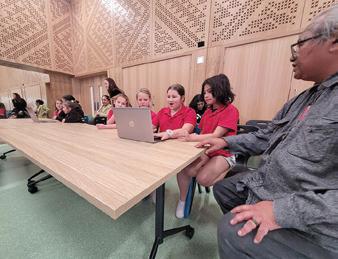

Matariki mā Puaka ki Arowhenua
This year, we hosted Matariki celebrations at the marae for the first time, opening it up to whānau and the wider community. In the past, our focus has been supporting Matariki Mackenzie in Takapō, but this year we brought it home.
The weekend began with Mātai Aroraki with Victoria Campbell, hautapu at the Ōrari river mouth, workshops, stalls, and live tuna demonstrations by our Mātaitai. Our Trap and Transfer representative presented on the seasonal mahi they do in Te Manahuna, finishing the weekend with a hākari.
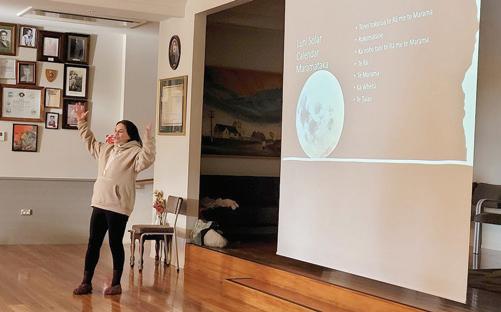





Business and Community Excellence Awards
A big mihi to Arowhenua Native Nursery and Restoration, named a finalist in the 2025 Business and Community Excellence Awards — recognised in both the Excellence in Primary Industry and Excellence in Workplace Safety categories.
Rūnaka Registrations

If you whakapapa to Arowhenua and haven’t registered yet, get in touch with us at: Email: arowhenua.admin@ngaitahu.iwi.nz Facebook Group: Te Rūnanga o Arowhenua
Te Rūnanga o Waihao
Register with us
Did you know that there are over 25,000 Ngāi Tahu members who whakapapa to Waihao? We want to grow our membership and engage with you! You can register easily online on our website. All you need is your Ngāi Tahu whakapapa number or some knowledge of your 1848 kaumātua, fill in the registration form and we will handle the rest!
Scan the QR code to go directly to the registration page or head to our website at www.waihaorunanga.co.nz
Toi Ora – Akuhata 2025

At the start of August, Toi Ora Waihao brought together a small group of creative practitioners for a relaxed weekend of mahi toi and whanaungatanga at the marae. From weaving muka for kākahu to crafting tāniko dog collars, painting, and recording taonga pūoro, the weekend was filled with creative energy. Whānau artists dropped in to share their works-in-progress, making space for connection, inspiration, and the quiet joy of creating together.

The wānanga also saw the care and growth of our marae’s taonga pūoro collection, with repairs made to a poiawhiowhio and the addition of a bone kōauau and southern hoputia. These taonga are now part of the living soundscape at Waihao, ready to be explored by whānau. With the next Toi Ora event likely happening in early 2026, whānau are encouraged to keep creating and stay tuned for the next pānui.

Hui-ā-Tau 2025
We are hosting Hui-ā-Tau 2025 in November, and we are on the lookout for whānau to support hosting our iwi for the Annual General Meeting and Report Back. If you are interested in supporting the kaupapa please register using the QR code below.


For whānau who want to keep up to date with all Hui-ā-Tau preparations, the central location for all info is on our website – in the whānau login section. Please contact the office for the login information at waihao@ngaitahu.iwi.nz
Hui Schedule 2025 Date What
Sunday 19 October Annual General Meeting
Friday 21 November –Saturday 22 November Hui-ā-Tau
Sunday 7 November Whānau Hui
Te Rūnanga o Moeraki
Jane Graveson
Ko Te Kohurau tērā kua ūhia nei ki te paiao kaniawhea.
Taki kau ana te kākau i te riroka o tēnei uri o Teitei.
Ko te pā o Moeraki e noho nei i te matapōuri, i te matapōrehu. E moe e te māreikura
We wish to acknowledge the passing of Jane Graveson. A devoted and active member of the rūnanga, Jane gave generously of her time and energy, regularly attending hui and events at the pā. Her commitment extended to representing Moeraki on various committees, including the education committee and the Tūhura Otago Museum committee. Jane’s contributions and presence will be deeply missed by her whānau and community.
Kia Ora e te whānau,
There has been lots happening around Moeraki since our last TPR update.
Defensive Driving School for Staff Across Te Rūnanga o Moeraki and Our Subsidiaries
To ensure that our rūnanga staff and employees from Whiria te Waitaki and the Moeraki Boulders Restaurant and Café stay safe on the road, they recently attended a one-day Drive to Survive programme facilitated by the National Advanced Driving School. Everyone found the day enjoyable and would recommend it to any other whānau interested in giving it a go.

Matariki at the Pā Whānau gathered in Moeraki on 1-15 June to celebrate Matariki. It was a terrific weekend that included several activities for all our whānau including a mirimiri and rongoā clinic, Taurite Tū for our kaumātua, mahi raranga, and arts and crafts for tamariki.
On Saturday evening, we enjoyed a hāngī led by the Peneamene whānau of Arowhenua. We finished our weekend by rising early on Sunday morning to celebrate Matariki, reflect on the year that was, followed by a beautiful breakfast prepared by the team at Moeraki Boulders Restaurant and Café.
Te Rūnanga o Moeraki wishes to thank all our whānau, and crew from Te Hā o Maru and the restaurant for making the weekend a memorable time for our whānau.
Below: Reita Matthews, Robyn Maguigan, Denise Whyte.

Celebrating Whānau

We recently received an email from a very proud Aunty Mayann, celebrating the achievements of her son, James Flack. James currently plays league for the North Devils Brisbane and represents the NZ Māori team every year in a NZ league tournament. They won this tournament in 2023 in Rotorua.
From your extended whānau at Moeraki Pā, keep up the awesome mahi James!


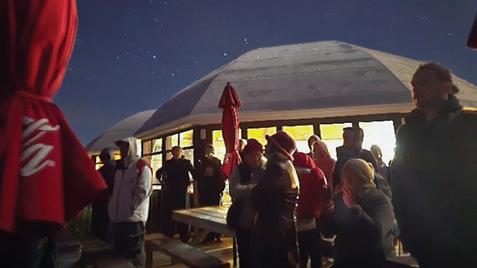
Pānui
If there are any whānau out there who want to celebrate a whānau success story or pānui, please email us at Moeraki.runanga@ngaitahu.iwi.nz with your panui for TPR
Get Connected, Stay Connected
E te whānau, just a reminder that it is never too late to get connected. We remain committed to enrolling whānau and keeping our current whānau contact list updated. If you have moved and need to update your details, or wish to enrol, please find our contact details below:
Te Rūnanga o Moeraki 43 Tenby Street, Moeraki 9482 (03) 439 4816 Moeraki.runanga@ngaitahu.iwi.nz www.terunangaomoeraki.org
Capable Māori – Take Your Next Step
Do you have years of work and community experience, but no qualification to show for it? Then this may be the personal and professional development opportunity you’ve been looking for.
This Kāi Tahu-led, culturally responsive online degree programme has over a decade of proven success for whānau wanting to achieve a Bachelor of Applied Management, Bachelor of Social Services, or postgraduate studies. Capable Māori offers a kaupapa Māori learning pathway, where you learn collectively as part of a Kāi Tahu whānau with the support of experienced Kāi Tahu kaiako.
Here, your mātauraka, skills, and experience are measured against a Bachelor or postgraduate qualification, showcasing your individual uniqueness and shared Māori worldview.
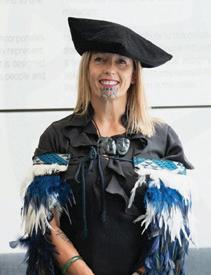
If this sounds like something you might be interested in, check out the experiences of Kāi Tahu whānui: When Life is the Learning – Te Karaka Article https://ngaitahu.iwi.nz/ opportunities-and-resources/ publications/te-karaka/whenlife-is-the-learning-tk82/

Email Kaihautu Kelli Te Maihāroa to request further information about our April 1, 2026 start – Professor Kelli Te Maihāroa, left, (Waitaha,
Kāti Huirapa Rūnaka ki Puketeraki
Ka Mate o Te Wā
Ka irihia ko rau mahara, ko parekawakawa ki kā pātū o te whare o Pōhutukawa
He rau mahara ki a rātau ko riro wawe nei i te tirohaka kanohi
He roimata te kai
He roimata ua, he roimata takata
Kai kā mate huhua o te wā, nei rā ō huāka e taki tou nei, e taki tou nei
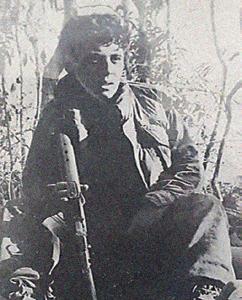



23 December 1946 – 10 June 2025
Improving Fish Passage in the Hakapupu River
Nā Matt Dale
A “rock ramp” fish ladder has been constructed in the lower Hakapupu catchment, significantly improving fish passage to the rest of the catchment.
Many of Aotearoa’s fish species undertake significant migrations as part of their life cycle, including many of our iconic freshwater species such as tuna and our five whitebait species. Instream infrastructure, such as culverts, can have significant impacts on our freshwater migratory species by preventing them from moving between their breeding, juvenile, and adult habitats.
As part of the Toitū to Hakapupu Project, the Otago Regional Council, Kāti Huirapa Rūnaka ki Puketeraki, and the East Otago Catchment Group have collaborated to retrofit the Brooklands Road ford with a “rock ramp” fish ladder to improve fish passage to the rest of the catchment.

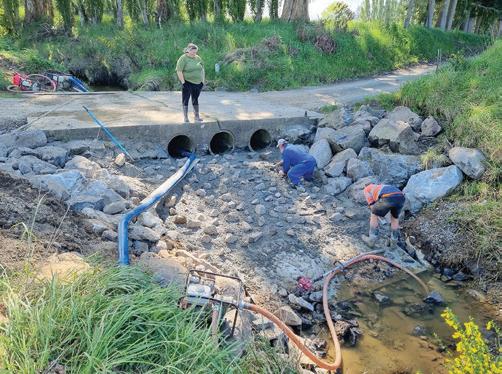
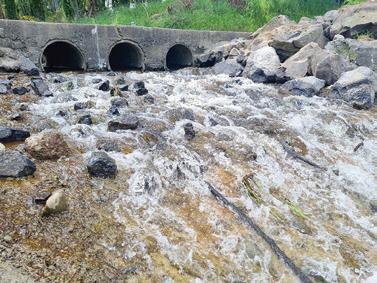
Brooklands Road under high flows following the construction of the rock ramp.
placed to reduce water velocity and provide resting areas for fish.
To test the effectiveness of fish passage remediation, Kāti Huirapa Rūnaka ki Puketeraki undertook a fourmonth whitebait monitoring project between September and December 2024 across five sites in the catchment. Whitebait nets were set for between 3–5 days per month for one tidal cycle per day, with the catch from each day being counted and then released back into the river.
The results from Brooklands Road showed a significant increase in the number of whitebait passing the ford, with an average of less than 10 per tidal cycle for September and October, increasing to over 400 for the two months following the construction of the rock ramp.
Downstream view of the Brooklands Road ford, showing poor fish passage characteristics present before construction of the rock ramp.
Right: Daily average number of whitebait (caught over a single tidal cycle) upstream of the Brooklands Road ford between September and December 2024.

Descendants of Mary and William Lloyd –
Roiti Whānau Trust AGM
Where: RD 826 Coast Road
When: 14 September 2025
Time: 11.00am
Followed by a shared kai.
Contact Jenny 027 8113 291 for any pātai.
Congratulations – Graduation / Diploma
Congratulations to Rauhina Scott-Fyfe (from the Goodwillie-Stevens whānau) who graduated on 20 May in Ōtautahi with a Diploma in Records and Information Management (Level 6) from the Open Polytechnic, supported by cousin Demelza Scott-Weekly and Ngāi Tahu Archive team members Takerei Norton and Freya Hargreaves-Brown.

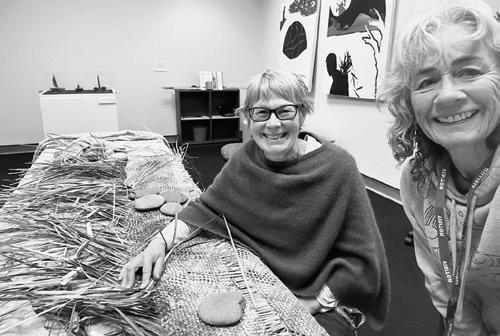
Ruruku: An Exhibition by Hauteruruku ki Puketeraki Waka Club
Hocken Library | May 24 – August 2, 2025
Nā Jen Lucas
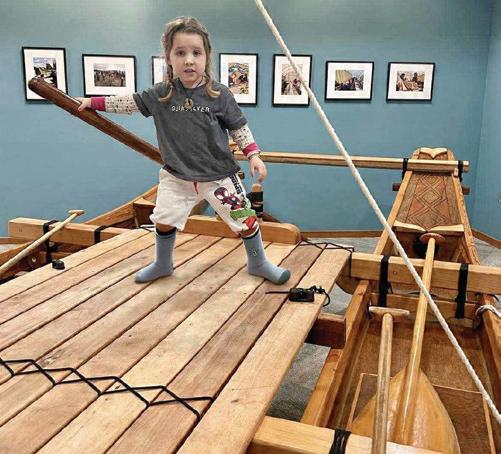
The Ruruku exhibition opened on Saturday 5 July with a powerful sense of ceremony and community, celebrating Kuramātakitaki – the double-hulled waka ceremonially paddled up Otago Harbour and installed as the exhibition’s centrepiece. This evocative gesture united land, sea, and story.
This exhibition is named for the community-led Ruruku project, which brought to life the club’s third sailing waka – Kuramātakitaki – inspired by traditional design and constructed using contemporary materials and techniques.
Kuramātakitaki was first launched in the predawn light on 9 February 2025, at the Waikouaiti awa. Built over two years (2023–2025) by the Hauteruruku ki Puketeraki Waka Club in Karitāne, the waka is a testament to dedication, craftsmanship, and community.
The exhibition features a stunning series of photographs that document the construction of Kuramātakitaki, capturing the people, place, and spirit behind the project. These images, alongside historical accounts of waka journeys, offer a sense of timelessness – honouring the past while navigating the present.
Crafted with care from a rich blend of materials –Western Red Cedar, Atlantic Cedar, Canadian Oregon, Kauri, Australian hardwood, recycled ancient Rimu, sailcloth, leather, harakeke, pounamu, and pāua –Kuramātakitaki embodies both tradition and innovation. Every element tells a story.


Hauteruruku ki Puketeraki Waka
Hauteruruku ki Puketeraki Waka are again taking our waka to Manuhaea from 28-30 November to sail/paddle over our whenua.
Enquiries to hauteruruku@gmail. com or message our Facebook page Hauteruruku ki Puketeraki if you’d like to know more.
Right: We’d love to see whānau if you live in the area or you’d like to take a trip to one of our traditional kāika mahika kai sites. There is a nohoaka site close by which can be booked through the TRoNT website, as well as other accommodation options.

Te Rūnanga o Ōtākou
Kei kā toka tū moana, kā poutokomanawa o tēnei iwi o tātou, tēnei te mihi, te tangi aroha ki a koutou katoa. Nau mai rā, e Takurua! He wā o te mātao, o te wānaka, me te whakatā.
As we step into Takurua, the deep winter season, it’s a good time to slow down and let whanaukataka flourish as we reconnect both to ourselves and to each other. The cooler months bring a natural pause and just like our tūpuna once did, we use this time to rest, reflect, and realign.
With Matariki and Puaka well risen in the sky, we look back in gratitude and look forward with intention. As you navigate the season, take the time you need. Refill your whare tapa whā, lean into your people, and trust that the warmth of Koanga is already on its way.
We have many kaupapa that have brought us together in this last season – here are a few of the highlights:
Ōtākou Rūnaka Branding Update
You may have noticed a recent change in our Ōtākou Rūnaka branding. Ōtākou has officially moved to displaying Te Ruru Terekou as the central feature across all forms of branding:
“Taking inspiration from the adage Te Ruru Terekou and using the form of a ruru turned towards the Te Rūnaka o Ōtākou name to guide the viewer towards our name. Using the form of a Manaia head when tilted to the side as a familiar icon in whakairo (carving), reimagined and simplified to replicate the Ruru.”
Pānui: Methodist Pūtea Grant 2026 Now Open
The Methodist Pūtea Grant 2026 is now open. This grant supports projects undertaken by Kāi Tahu Rūnaka south of the Waitaki and/or affiliated whānau and individuals with a focus on the heritage needs of our iwi.
There is only one funding round per year, with five categories including:
• Wairua/religious studies
• Culture and heritage needs
• Maintenance of rūnaka church buildings
• Upkeep of urupā
Applications close 31 March 2026.
Please contact our office for more details and the application form. We look forward to receiving your application.
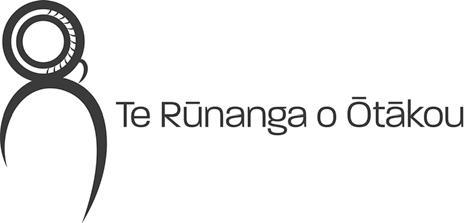
John Soloman and Whānau – Celebrating 80 Years
On 24 May, the Russell whānau came from far and wide to celebrate John’s 80th birthday at Ōtākou Marae – the first reunion of the brothers and sisters in quite some time.

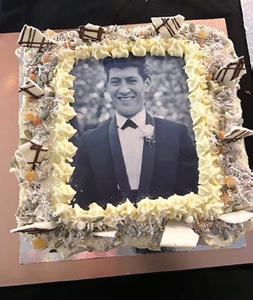
Unutai e! Unutai e! Exhibition
The Unutai e! Unutai e! exhibition is a collaboration between Kāi Tahu and artist Anne Noble. It harnesses the power of contemporary art to shed light on an urgent environmental crisis: the deteriorating state of fresh water across Ngāi Tahu tribal lands.
In 2020, Ngāi Tahu filed a statement of claim with the High Court in Ōtautahi Christchurch, seeking recognition of our rakatirataka over wai māori within our takiwā. To support this claim, photographer Anne Noble was entrusted to capture and document the crisis.
Mihi Whakatau

The exhibition begins at the pūtake mauka — our ancestral mountains, the source of fresh water. It then journeys through polluted waterways before concluding with a vision of hope — projects dedicated to restoring balance and finding solutions.
The exhibition is open now at the Dunedin Public Art Gallery until 12 October, 2025.
We invite you to visit and reflect on this pivotal moment in our tribal story—one that calls us all to take action in protecting the world around us.
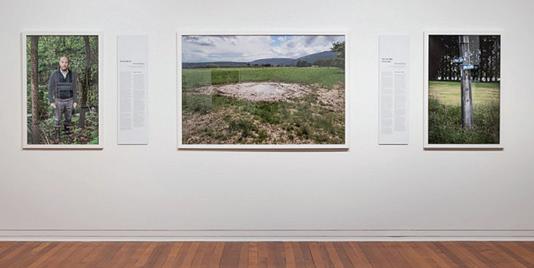
Unutai e! Unutai e! Working Group: Gabrielle Huria, Edward Ellison, Paulette Tamati-Elliffe, Tūmai Cassidy, Connagh Wesley, Bob Penter, Anne Noble, Cam McCracken and Lucy Hammonds.
Te Wiki o te Reo Māori – 14-20 September
He taoka te reo – let’s celebrate!
Te Wiki o te Reo Māori is just around the corner, and it’s a great time to uplift, celebrate, and use our beautiful language in everyday ways. Whether it’s a kōrero over a cuppa, singing a waiata, or learning a new kupu each day, every effort counts.
Let’s continue to strengthen te reo Māori in our homes, workplaces, and communities.
Kia kaha te reo Māori!
Ōtākou Hapū Wānaka –
Matariki-Puaka Wānaka
As the stars of Matariki mā Puaka rose in the early morning sky, whānau came to the marae to celebrate. Over the long weekend, we were immersed in a variety of kaupapa including mahi toi, kā āhuatanga o kā whetū, waiata, and whanaungataka.

sitting in Tāmatea during the Ōtākou Matariki-Puaka Wānaka.
One of the most memorable moments of the wānaka was the hākari on Friday night with our kaumātua – a special opportunity to connect and celebrate together.
Mana Pounamu 2025 – Ōtākou Rakatira Excellence Awardees
He mihi tino nui tēnei to our Ōtākou rakatahi who received awards at the 2025 Mana Pounamu Awards ceremony. The Mana Pounamu Awards celebrate rakatahi Māori excellence, acknowledging academic, cultural, leadership, community, and sporting achievements by both junior (tēina) and senior (tuakana) students.
We congratulate Tūkitaharaki Pōtiki (Kings High School), who was recognised in the tēina category for his contributions to kapa haka with He Waka Kōtuia and his strong performance in last year’s Manu Kōrero competition.
Kā mihi nui also to Lyla Ward, who received a Mana Pounamu Award in the tēina category for Otago Girls’ High School.
Congratulations to Kura-mātakitaki Stevens, who was awarded in the tēina category for John McGlashan College.
And congratulations to Aria Karetai Molinari, who received the senior Mana Pounamu Award for Logan Park High School.
Ka mau te wehi e te whānau! We are incredibly proud of our rakatahi and their achievements. They carry the hopes of Ōtākou with them, and we look forward to seeing their continued growth and success.

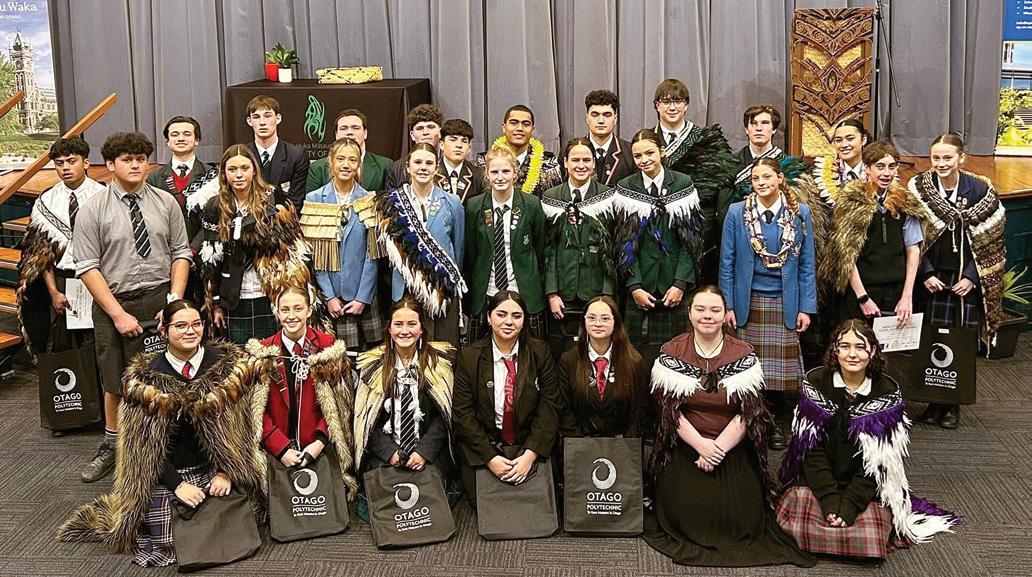
Tūhura Otago Museum
Wildlife Photography Competition
Ka rawe, Connagh Wesley! He mihi nui to Connagh, who was named a finalist in this year’s Tūhura Otago Museum Wildlife Photography Competition, in the Natural Abstract category. With over 4,500 entries, this is an incredible achievement and a real testament to her talent behind the lens.
You can see her stunning work on display at the Tūhura Otago Museum Wildlife Photography Exhibition until 12 October – well worth a visit!
Save the Date!
Ōtākou will be hosting its Annual General Meeting (AGM) on Sunday, 9 November. We welcome all whānau to come along – kai will be provided.
The day will begin with the A3 Kaitiaki Limited AGM, followed by Te Rūnaka Ōtākou Limited, and will conclude with the INC SOC AGM.
Please keep an eye on all platforms for further information.
H.K. Taiaroa Exhibition
Nau mai, haere mai ki tēnei whakaaturaka e whakanui ana i te rakatira a Hōri Kerei (H.K.) Taiaroa me tōhona hoa rakatira a Tini Kerei Taiaroa.
Ōtepoti is excited about this exhibition celebrating esteemed 19th-century Kāi Tahu rakatira and political leader H.K. Taiaroa (son of Te Mātenga Taiaroa). The legacy of H.K. and his wife Tini Kerei Taiaroa is honoured through taoka tuku iho, contemporary art, and the voices of their descendants.
“The exhibition is an opportunity to focus on the lifelong effort of Hōri Kerei Taiaroa to achieve justice and security for his people in the wake of the historic land sales and broken promises, to remember and honour his legacy.”

– Edward Ellison, Ōtākou Rūnaka Upoko
Dunedin Public Art Gallery
August 3 – November 23, 2025
Stay Connected
Feel free to browse our Facebook page and our Ōtākou Rūnaka website. Information to register as a hapū member or to book the marae for hui can be done online. Bookings are subject to any health and safety restrictions in place at the time, including if a tangi arises, which takes precedence.
www.otakourunaka.co.nz office@tro.org.nz
03 478 0352
Waihōpai Rūnaka
Whakawātea and Official Opening of 8 Kaumātua Papakāika Units
Following the opening of two kaumātua papakāika units in June 2023, Waihōpai Rūnaka — with support from Te Rūnanga o Ngāi Tahu and HUD —has successfully funded and completed eight new kaumātua papakāika units.

We are excited to have the mātauraka of our kaumātua onsite, guiding our younger generations and providing the intergenerational village our kaumātua dreamed of.

Our whānau, along with Bragg Building and various contractors, attended a whakawātea on Tuesday 10 June to cleanse the space in preparation for kaumātua to move in following the official opening. Kā mihi nui to BOON Architects, Bragg Building, and Southern Quantity Surveyors for their support throughout this project.
Despite the rain and fog, the Waihōpai community showed up in force to tautoko the official opening of the eight new papakāika units on Thursday 12 June. Ailene Stehlin and Cyril Gilroy cut the red ribbon to symbolise the opening of the papakāika and the beginning of a new journey as they move into two of the units.
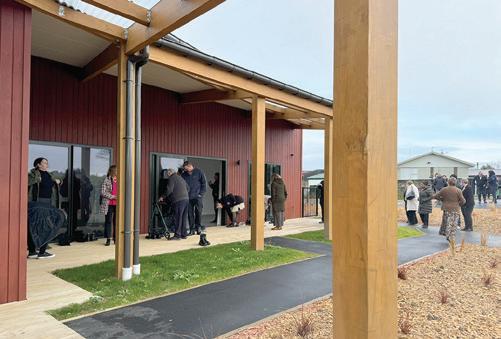

Te Pōhā Mātauraka o Murihiku
Written by Wiki Burdon and Raiha Johnson
Te Pōhā Mātauraka o Murihiku is a rūnaka-led education base for localised mātauraka. A collaboration between Waihōpai, Awarua, and Ōraka Aparima Rūnaka, Te Pōhā Mātauraka supports kura by working with and for our rūnaka to provide authentic, accurate, and culturally relevant resources.

Te Pōhā Mātauraka o Murihiku –Kaumātua Honoka (April 29, 2025)
On 29 April, Raiha Johnson and Wiki Burdon visited Waihōpai Rūnaka kaumātua to share their kaupapa. It was a beautiful opportunity for whanaukataka, to hear about their kura experiences and aspirations for their mokopuna.

Te Pōhā is about strengthening connections between local kura, mana whenua, and mātauraka Māori unique to Murihiku. Raiha and Wiki emphasised that this kaupapa is not about giving away taoka tuku iho, but about asking: What do you want our tamariki and rakatahi to know about Kāi Tahu and this takiwā?
They shared their gratitude for working in this space, supporting the intergenerational transmission of mātauraka for the benefit of our tamariki, rakatahi, and mokopuna.
Te Pōhā Mātauraka o Murihiku –
Teacher PLD Day #2 (May 29, 2025)
Held at Murihiku Marae, this professional development day welcomed approximately 60 kaiako and tumuaki from 17 kura across Murihiku.
Highlights included:
• Kōrero by Joe Wakefield in the wharenui about the history and deeper meanings of the marae
• Learning about mahika kai and its connection to the WAI25 claim
• Cultural Streetscape kōrero and map from the Inner City Invercargill redevelopment
A huge mihi to Odele Stehlin, Joe Wakefield, Evelyn Cook, Keri Whaitiri, and Karen Ave for their support and guidance.

Feedback from Kaiako:
“We loved our day at the marae! It was well-paced, purposeful and meaningful learning and instantly transferable to akomanga.”
“What an amazing koha of mātauraka Matua Joe gave to us all! Just wow! Incredible to listen to, connect with and feel inspired.”
“The mauri was on! Wow!Honestly such a powerful day! Love this kaupapa of Te Pōhā with our rūnaka, forever grateful to be on this journey. Ngā mihi nui koutou, Mauri ora!”
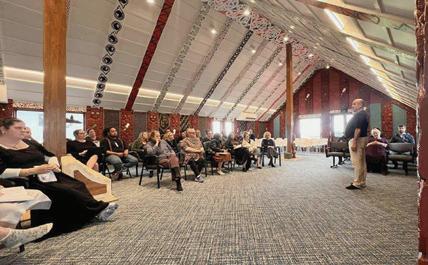

Te Unua Museum of Southland
Te Unua Iwi Advisory (TUIA) continues to work with the Te Unua ICC-Gibson team to develop mana whenua perspectives for the permanent exhibition space. Gibson International is responsible for integrating all exhibition content.
We also hosted Ngāi Tahu Archive, who established Kā Huru Manu and Kareao. On 4 July, Takerei Norton and Helen Brown ran a workshop to review Murihiku source material for potential exhibition storylines. They’re keen to work with whānau on a second round of cultural mapping to expand Kā Huru Manu.

Matariki me Puaka Celebration (19 June, 2025)
Waihōpai Rūnaka welcomed 200 people from the community to Murihiku Marae to celebrate Matariki me Puaka. We acknowledge the rising of Puaka as the tohu to guide our mātauraka and celebrate the new year.



Kā mihi nui to Matua Joe Wakefield for leading the hautapu ceremony, to our whānau and kaimahi who read karakia for each whetū, and to all volunteers who supported in the kīhini. Special thanks to James Hargest College for their amazing kapa haka performance.
Membership
We would love to connect with our wider rūnaka whānau. If you or your whānau would like to register as a member of Waihōpai Rūnaka, please contact: admin@waihopai.org.nz to receive registration forms.

Ōraka Aparima Rūnaka
Kia Kūrapa ki Ōraka-Aparima
Around 60 Ōraka-Aparima whānui from around the motu filled Takutai o te Tītī to learn reo Kāi Tahu at a Kia Kūrapa delivered by Kotahi Mano Kāika in July. Classes were held at Aparima College, with a separate programme for tamariki, plenty of whakawhanaukataka, and a field trip taking in Taramea Howell’s Point, Matariki Cosy Nook, and Te Puka o Takitimu Monkey Island, with insightful kōrero from Gary Davis. Many thanks to Kotahi Mano Kāika for their mahi!
We have lots more kōrero reo opportunities coming up, including development of a new reo strategy for our rūnaka with Hana O’Regan, supported by Te Mātāwai – Kia ūkaipō anō e reo. By the time you read this, there should still be two sessions left: Saturday 13 September and Saturday 11 October. You can join in person at Takutai o te Tītī or online. We welcome input from all rūnaka members, no matter their reo ability! Get in touch with the rūnaka office for details.
In addition, our reo group continues to meet on Thursday mornings, and we have whaikōrero and karanga training on Sunday mornings before the general monthly meeting.


Whitebait Stand Bookings Open
Whitebait season is underway! You may not know the rūnaka has a whitebait stand on the Aparima River that can be booked by members.
To make a booking, please contact the rūnaka office.
Phone: 0800 234 8192
Email: office@orakaaparima.org.nz Bookings are for three days at a time.
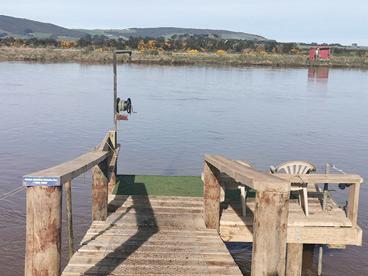
Te Rūnanga o Ngāi Tahu Rep and Alternate Rep Positions
Ōraka-Aparima Rūnaka Inc Society is calling for candidates for the positions of Te Rūnanga o Ngāi Tahu Representative and Alternate Representative. All nominations must be in writing and received by the rūnaka office no later than 5:00pm on Friday 26 September.
The selection of the representatives will be conducted by the rūnaka Appointment Committee at the AGM on 12 October. Anyone wishing to apply for either position must be a whakapapa member of Ngāi Tahu whānui who is currently registered with the rūnaka and has been involved with the rūnaka over the previous 12 months or contributed to the rūnaka over an extended period of time.
For more details and criteria, contact the office:
Phone: 0800 234 8192
Email: office@orakaaparima.org.nz
NB: All registered members are welcome to attend our general monthly meetings, either in person or online. Meetings are usually held on the second Sunday of the month at Takutai o te Tītī Marae. We send out the agenda and link to attend online before the meeting. This year’s AGM is on Sunday 12 October. If you would like to attend and are not receiving this information, please contact the office and we’ll check we have your up-to-date details.
Fancy Some Time in Te Anau?
The rūnaka has a four-bedroom whānau property in Te Anau available for members to book. Bookings are now being taken for the summer holiday period. Please note: from Friday 19 December to Sunday 25 January, bookings are for a maximum of three nights.
Contact the office about bookings:
Email: office@orakaaparima.org.nz
Phone: 0800 234 8192
Kaumātua Support Grant
We are still taking applications for a oneoff grant available to support kaumātua with essential everyday living expenses and one-off costs. We also have grants for healthy outcomes, sport and culture, and hardship. These grants are in addition to those available from Ngāi Tahu.
Visit our website: orakaaparimarunaka.co.nz
Email: office@orakaaparima.org.nz
New Coastguard Riverton Rescue Vessel Blessed
Coastguard Riverton’s brand new rescue vessel was blessed by one of our kāhui kaumātua, Teoti Jardine, before it touched the water and underwent sea trials. The official launch for the public took place on 16 August. Rūnaka members and kaimahi are part of the seagoing crew, and the Coastguard has also supported waka ama activity at Ōraka Colac Bay.
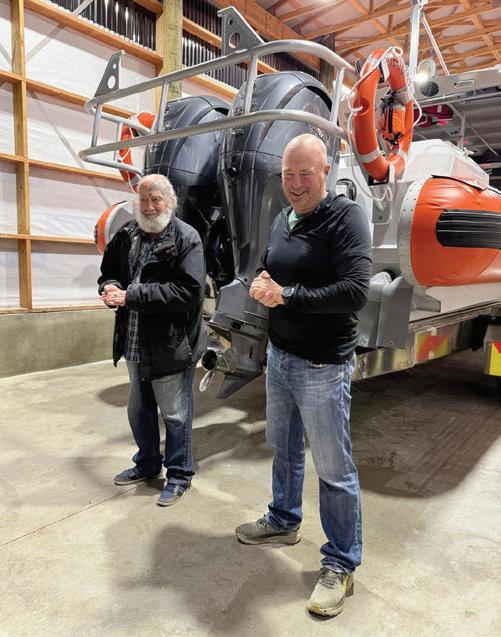



Four tokoeka Haast kiwi were being permanently relocated and were farewelled at Takutai o te Tītī Marae. Among those there to say ‘haere rā’ were Rūnaka members pictured from left: Hunter, Josh and Skyla Kingipotiki and Alex Taurima (with a DOC staff member). The name ‘tokoeka’ means weka with a walking stick.
Left: Hana Davis (left) with Kyra Batchelor. Hana won the Pei te Hurinui Jones section for the Manu Kōrero speech competitions in Dunedin in June. She will represent Otago/Southland in the national Manu Kōrero competitions in Whanganui September 16–18. Kyra won the junior section. Both are Kāi Tahu students at Te Wharekura o Arowhenua.
Awarua Rūnanga
Matariki Whānau Evening
24 June
Whānau Matarikievening –He pō whakamīharo!
Our whānau Matariki evening held on Tuesday 24 June was a truly beautiful celebration of connection, reflection, and renewal.
The atmosphere was filled with laughter, aroha, waiata, and kotahitanga as we came together to honour the māramataka of Matariki and the special place it holds in our hearts and kaupapa.
It was a fabulous night that simply could not have happened without the collective support of our whānau, kaimahi, tamariki, marae, and community.

Ngā waiata, Ngā Hononga. Below: Tamariki enjoying the evening.


Whānau celebrating Matariki. Below: Kaiako and whānau together.

Please take this message as a huge mihi to each and every one of you for your mahi, your presence, and your ongoing commitment to Te Rourou.
Your contributions – big and small – are what make our kaupapa thrive. We look forward to welcoming another wonderful Matariki season in 2026.
Ngā manaakitanga, me te mihi maioha ki a koutou katoa.
Ngā Waiata, Ngā Hononga
“Ko te reo te hā o te mana Māori”
Each week, our tamariki and kaimahi gather to whakamana te mana reo (strengthen the power of language) through waiata and mōteatea (traditional chants). This term we will continue learning He Waiata Moemoeā, songs about aspirations for our whenua, and a mōteatea honouring the histories and journeys of our tūpuna.
He hononga tō tātou ki ngā uri o Awarua!
We are deeply privileged to welcome Awarua South Sprouts whānau every Rātu – this is our third year of coming together!
Our combined voices fill the whare, weaving whānaungatanga and mana tāngata through shared practice, in preparation for our Ahurei Waiata Polyfest 2025.
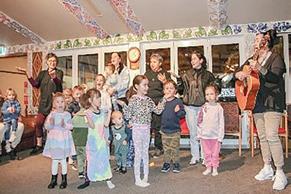
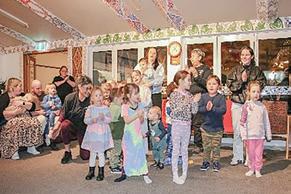
Celebrating reo and waiata together: all those pictured are whānau connected to Te Rourou Whakatipuranga o Awarua – including tamariki who attend the centre, and their extended whānau who come together with Kaiako and marae whānau to celebrate Matariki each year.
“Mā te waiata ka ora te reo, mā te reo ka ora tō tātou Māoritanga!”
“Through song, the language thrives; through the language, our Māoritanga thrives!”
WHĀNAU SUBMISSION – TIM SCOTT
Restoring the Maitapapa Kaik Urupā at Henley I am Timoti (Tim) Scott, and I whakapapa to Wharerimu Brown (Kaumātua 1289 in the Blue Book), and from her to Sarah Palmer and Hariet Overton. Wharerimu and many Overtons are buried in the urupā.
I am 75 years old. I grew up in Christchurch but left many years ago and now live in Palmerston North. I am a retired Coroner – a Judge for the dead – and so I feel well qualified (or so I say) to take on a project like restoring an urupā.
I first visited Maitapapa Kaik when I was about 15 years old, specifically to see the then-abandoned house of Ben Overton, situated on the flat land to the right of the old Crossan house, which is still occupied. My family and I would often turn back toward Dunedin after visiting the whare, and so I was unaware until about 15 years ago of the existence of the urupā or Māori Kaik Road. I learned of it from the then-occupier of the Crossan house –a Pākehā with no direct connection to it.
When I first visited the urupā, it was in a sorry state –ravaged by floodwaters and years of neglect. Only seven grave sites were identifiable, and I feared this sacred place, the final resting place of many of our tīpuna, would be lost forever. What a great shame – both figuratively and literally – to see this spiritual place disappear simply because we, as an iwi, did not care enough to act.
I continued to visit the urupā whenever I was in the area, always leaving a bottle of water at the entrance – but it was never there on my next visit. I began to think “they” should do something about this – but “they” never did. Eventually, I realised “they” might be me.
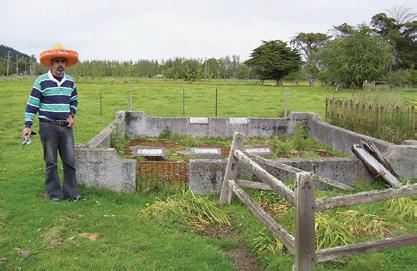




How hard could it be to restore the urupā? What could possibly go wrong? Little did I know I was about to embark on a journey lasting about 10 years. Like any long journey, there were wrong turns and hiccups. At times, I thought it was too hard and considered giving up. My emails south seeking help began to reflect my waning enthusiasm. In a moment of despair, I emailed Edward Ellison as a last resort. He responded positively and put me in touch with Ian Bryant.
Ian quickly came on board, and from then on, things started to happen.
Although I could supply mahi in the form of funding from Palmerston North, I couldn’t provide physical labour from that distance. The money was the easy part – so long as others, notably Ian, undertook the planning and hard mahi on the ground. I supported (or perhaps hassled) Ian from afar. There must have been times when my bombardment of emails was less than welcome. But the results speak for themselves.
Sadly, many grave sites were unmarked by the time work began. Now, their locations are known and marked with paving stones, thanks to a groundpenetrating radar survey of the entire urupā. Ian organised this, and I was happy to fund it. This survey proved invaluable and was the most significant part of the restoration – real 21st-century science in a 19th-century environment.
To complement this, the names of known tīpuna are now recorded on the storyboard within the entranceway lynch gate. The provision of the lynch gate, water source, and restoration of the pathway have made the urupā the best it can be under the circumstances. Unless there’s a dry spell, there’s now no reason for the tapu or spirits of the tīpuna to leave the urupā when we do.
At last, we have a place where we can visit our tīpuna with pride. It remains for us and future generations to fund and maintain the urupā. I will play my role, but at 75 years old, time will overtake me, and it will be left to younger whānau to ensure this important task continues.

My partner Kathriona and I were proud to attend the ceremony celebrating the restoration. We were deeply moved by the number of whānau – most of whom I did not know – who joined us and made the day memorable, both at the urupā and afterwards at Sinclair Wetland, where we enjoyed a delicious kai prepared by many hands.
I was “blown away” and humbled to receive the precious pounamu taonga, which I now wear with pride and respect. Kathriona was also surprised and humbled to receive a gift of flowers.
I am grateful to have had the opportunity to comment briefly on this project. I remain extremely grateful to Ian Bryant and his group of supporters – without whom this project would not have seen the light of day. They, rather than me, deserve the praise for their hard mahi.
Thank you Ian and team.

WHĀNAU SUBMISSION – ARIANA SUTTON AND WHĀNAU
Walla and Delca West’s Whānau Whakapapa Wānanga
During King’s Birthday weekend, Walla and Delca West’s whānau and mokopuna gathered at Te Rau Aroha for a whakapapa wānanga. Gale-force winds and sporadic rain meant we had to change Saturday’s planned haerenga. There’s always uncanny wisdom in the way the taiao lands.
We stayed put at the marae and embraced whanaungatanga, waiata practice, and whakapapa presentations and learning.
Despite weather warnings, there was a peaceful āhua in the wharerau on Friday night. Some mokopuna had never stayed at the marae before. It was incredibly special to have four generations come together and celebrate who we are, our whakapapa, with a focus on tūpuna Waa, Te Anau, and Kohikohi.
Key highlights included:
• Rangatahi learning tītī waxing and preparation
• Mokopuna and kaumātua learning and reciting pepeha
• Standing together to waiata
• A beautiful final hākari shared
• The weather clearing for a kura kōhatu unveiling for poua and taua on Sunday
A big mihi to Corey Bragg for sharing stories from the wharerau and wharekai, and to Estelle for her beautiful karanga welcoming the whānau home.
This wānanga was in honour of our grandparents, their children, and mokopuna. I dedicate this wānanga to Julia Blair (née West), who tragically passed in 2023, and her precious tamariki Kaia and Te Ariki, still shining bright with us today.
This wānanga was supported by Te Rūnanga o Ngāi Tahu –ngā mihi nui to the funds komiti once more for the opportunity to strengthen our Ngāi Tahutanga.
Mō tātou, ā, mō kā uri ā muri ake nei.



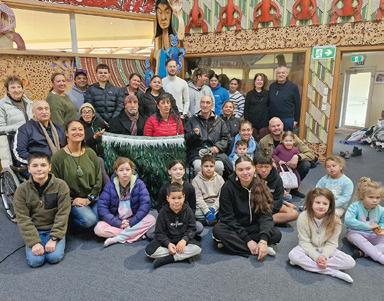
Left, group photo – Jakie Waters, Renee Grieve, Barbara West, Debby Newton, Jackie West, Tamania Waters, Ricky Waters, Moana West Stonebanks, Jaziah Waters, Leiyah Waters, Aleshia Waters, Jahvahn Heath, Pauline Te Maiharoa, Chelsey Koberstein, Mackenzie Koberstein, Tom Koberstein, Ian Stonebanks.
2nd Row: Ariana Sutton, Cecila West, William West, Greg West, Iona Sutton, Victor West, Rocky Te Maiharoa.
Bottom Row: Tylan Toomey-Heath, Waiariki Waters, Kaia Parata, Myah Pennicott, Nora Renton-Heath, Tahlia Pennicott, Manaaki Waihirere, Kyzae Waihirere, Te Ariki Parata, Rehua Sutton-Lloyd, Alexis Waters.
Taurahere Groups


Ngāi Tahu ki Tauranga Moana – Matariki Lunch
A small gathering came together at Aronui Marae to celebrate Matariki this year. We paused to remember those we’ve lost and looked ahead to what’s to come. Kaumātua Ross Hemera shared kōrero with us about tikanga on the marae, which was a really special moment.
There was delicious kai, shared stories, and a warm sense of connection —a beautiful way to mark the Māori New Year.
Left: Ross speaks to the rōpū about tikanga on the marae.
Below left: Rachel Chaney checks out the Matariki display of books and games.
Below: Matariki kai.

Mō Tatou? Mō Kā Uri? Our Big Balancing Act
Nā
Michael Stevens, Chair, Te Rūnanga o Ngāi Tahu Audit and Risk Committee
Endorsed by
Justin Tipa, Te Kaiwhakahaere o Te Rūnanga o Ngāi Tahu and
Tania Wati, Te Kaiwhakahaere Tuarua o Te Rūnanga o Ngai Tahu
Everything that needs to be said has already been said. But, since no one was listening, everything must be said again.
André Gide
In 2014 Tā Tipene O’Regan delivered the 14th Annual Vincent Lingiari Lecture at Charles Darwin University in Australia’s Northern Territory. His talk was entitled “The Economics of Indigenous Survival and the Development of Culturally Relevant Governance.” He opened with an explanation of mō tātou, ā, mō kā uri ā muri ake nei, noting that this whakatauki, like all mottos, is aspirational ‘has that nice pious ring to it.’ Accordingly, it:
decorates almost everything we [Ngāi Tahu] undertake, from cultural festivals to exhibitions, to tribal superannuation saving schemes. It’s all over our tribal and subsidiary company websites. But, now we have settled our Claims and made peace with the Crown, what is that aspiration? What is our new purpose? What does the motto mean now?
For Tā Tipene, that primary purpose is the long-term protection of Ngāi Tahu heritage and development of Ngāi Tahu culture. This ‘intergenerational aim,’ he explained, ‘requires an inter-generationally aligned economy [and] an aligned form of governance.’ The latter is not, in his view, to be found ‘in the churn of Western market economics and its conventions of governance.’ An ‘iwi economy’ must, for example, ‘produce wealth over the long-term and not just for the generation in which it finds itself.’
Tā Tipene had earlier embedded these ideas in Te Kawenata o Ngāi Tahu, which is a cornerstone of the Investments Charter under which Te Rūnanga Group now operates.
Producing wealth over the long-term is much easier said than done. Tā Tipene went on to note that ‘there are few examples worldwide where a good level of capital growth matched with a rising population has been
successfully achieved. This is even truer of communities existing as minorities within larger capitalistic environments.’ This is such an important point that Tā Tipene repeated it later in his kōrero:
There are no satisfactory examples in which the shareholding community is expanding generation on generation and in which capital wealth is being expanded at a similar rate or in the same proportion. Even the most successful examples of economic longevity – the overseas Chinese and the Basque Mondragon Co-operative depend, ultimately, on a reduction in [membership].
Te Rūnanga o Ngāi Tahu (Te Rūnanga) has experienced huge membership growth over the last 30 years. In 1996 there were 7,500 registered members. In 1997 that number grew to 18,800. It was around 21,000 when the Ngāi Tahu Claims Settlement Act was passed in 1998 and 43,511 by 2008. By 2018 there were over 60,000 registered members and in late 2024 that number stood at 85,000.
How has Te Rūnanga grappled with the fundamental need for corresponding capital growth that Tā Tipene referred to? And what is Te Rūnanga currently doing in response to this challenge? Answers to those two questions are at the heart of this article.
The Kaupapa Poutahu of Te Kawenata sets out the principle that the assets of Ngāi Tahu will be managed separately from the bodies that spend and distribute the income earned from those assets. This means Ngāi Tahu Holdings Corporation (NTHC) manages our assets and produces income from them, and the
Office of Te Rūnanga, under direction from Te Rūnanga Representatives, manages how the distributed income is spent. It is also for Te Rūnanga Representatives to determine how much annual funding NTHC should distribute to the Office to benefit current generations of Ngāi Tahu (via Pūtea Whakamahi payments to Papatipu Rūnanga and Whai Rawa Matched Savings, for example). Te Rūnanga Representatives must also ensure that NTHC retains and reinvests enough profits to grow the pūtea for future generations.
In other words, Te Rūnanga Representatives perform two fundamental roles – maximising pūtea for the living and preserving pūtea for the unborn. This means that we should not unduly deny the present to benefit the future, nor rob the future to pay for the present. Accordingly, a distribution rule ‘should neither pay out too much, nor too little.’ That is, at its most basic level, the ‘big balancing act’ I refer to in the title. Balancing these generational interests require us to factor in both inflation and membership growth.
The dilemma currently in front of Te Rūnanga is not especially new. Large and growing demands on a small capital base (derived from meagre government reparations for large-scale colonial-era land losses), and challenges posed by inflation, confronted Ngāi Tahu leaders between the 1920s and 1960s.
During 1920-21 the Jones Commission investigated Kemp’s Deed 1848 and, as with earlier government investigations, found that the Crown had breached it to the detriment of Ngāi Tahu. The Jones Commission made an original contribution by suggesting cash compensation for historical breaches, and thus the establishment of a tribal endowment (rather than the return of land, for which Ngāi Tahu leaders had demonstrated a consistent preference, but which had proven politically impossible time after time).
The Commission established the historic value of land denied to Ngāi Tahu, added interest, and determined the iwi was owed £354,000. This led to two major developments. First, the establishment of the inaugural Ngaitahu Trust Board, and second, identification of the Trust’s would-be beneficiaries who would receive health, education, and housing assistance. This beneficiary identification exercise, conducted between 1925 and 1929, resulted in the Pink and Blue Books foundational to our whakapapa registration and management system today.
The government baulked at the Jones Commission’s recommendation and offered several lower figures. This was particularly true during the Great Depression when the government entered a period of prolonged retrenchment. Ngāi Tahu representatives declined settlement offers of £50,000 in 1931 and £100,000 in 1935. In late 1944, spurred by substantial Ngāi Tahu contributions to World War Two, the government made an offer of £300,000. Then Ngaitahu Trust Board chair,
Tom Bragg, insisted not only on the commission’s £354,000 recommendation, but the interest that would have been earned on that figure between 1920 and 1944. However, the government, aided by Southern Maori MP Eruera Tirikatene, got its way and the Ngaitahu Claims Settlement Act was passed. Accordingly, the Ngāi Tahu Trust Board, reconstituted in 1946, would receive £300,000, albeit in 30 annual instalments, without interest, and not adjusted for inflation. That proved incredibly costly for the iwi.
Coupled with poor financial decision-making, the Trust Board verged on bankruptcy twice within its first 10 years, as Te Maire Tau noted in a 1995 edition of TE KARAKA. Frank Winter was then appointed as board chair in 1956 and oversaw the strict observation of a “One-Third Rule”, which will be familiar to many of our senior kaumātua.
In simple terms, this meant that one-third of annual profits were distributed, and two-thirds were reinvested. Because there was a direct relationship between earnings and spending, annual distributions fluctuated. This was less of a problem then, than it is for Te Rūnanga now, because the Trust Board did not fund a large office and range of social and cultural programmes, which require stable year-on-year budgets.
Winter’s fiscal discipline laid economic foundations that his successors could build on. However, post-war inflation ran high and caused the Trust Board several difficulties. In 1952 alone, inflation was almost 12 percent. Our purchasing power, and thus the real value of the 1944 settlement, which was already some 15 percent lower than the amount recommended two decades earlier, was eroding every year. According to the Reserve Bank of New Zealand’s inflation calculator, £10,000 had, by 1964, decreased in purchasing power by 52.5 percent. Accordingly, the Trust Board would have needed a payment of £21,053.26 to maintain the real value of the annual payment. However, we received the set rate of £10,000. Rolland O’Regan, Tā Tipene’s father, memorably described this situation as ‘disinheritance by inflation.’
Considering that backdrop, one would assume that Te Rūnanga would be especially careful to protect the pūtea received via the Ngāi Tahu Claims Settlement Act 1998 from the twin challenges of inflation and membership growth. Surely history would compel us to err on the side of caution. As the then Kaiwhakahaere Tā Mark Solomon rightly noted in TE KARAKA in 2000, our present ‘economic position has been hard won; there are no second chances and no room for mistakes.’
Unfortunately, notwithstanding our heritage and our whakatauki, Te Rūnanga has, upon reflection, almost certainly been robbing the future to pay for the present in recent years. How did that occur? To what extent? And what are we doing to remedy the situation?
In 2014 Te Rūnanga adopted key elements of Modern Portfolio Theory in the form of an Investments Policy Framework (IPF). Modern Portfolio Theory was developed in the 1950s to help investors, especially risk-averse investors, build portfolios to maximise economic returns relative to their specific risk appetites. The IPF introduced the idea of a “Balanced Portfolio”, which drove asset sales of land holdings to fund the “rebalancing” of the portfolio (that is, investment in businesses away from land). This approach, to my mind, did not adequately take into consideration Te Kerēme nor the Crown induced intergenerational landlessness of the iwi.
The IPF, to its credit, introduced the idea of ‘intergenerational equity’, which reflects the spirit and intent of our whakatauki. However, it ultimately failed to consider the uniqueness of Indigenous organisations generally, and Ngāi Tahu specifically. I believe that same blind spot is evident in the Distribution Policy that Te Rūnanga adopted in August 2019.
There are numerous types of distribution rules, each with their own pros, cons, and trade-offs. The “One-Third Rule”, as we saw earlier, was an earnings-based rule. In 2019 Te Rūnanga adopted a version of the “Tobin Rule” also known as the “Yale Endowment Rule” or simply the “Yale Rule”, which is a valuation-based rule. This approach was developed by Economics Nobel Laureate, James Tobin, to determine how much university endowment funds in the United States can safely draw down on an annual basis while still meeting future needs. While Te Rūnanga is a perpetual organisation, with endowment features, we are fundamentally different from other endowments, especially non-Indigenous endowments. For example, we have cultural, perhaps even spiritual connections, with some of our investment assets. Conventional university endowment funds do not.
Consequently, conventional university endowment funds can freely sell any of their assets to produce cash for distribution. Te Rūnanga cannot do that. This is because much of our investment portfolio is held in land and fishing quota that we are unlikely ever to sell. We must therefore derive the cash that the Office spends from the cash income generated by NTHC. Put differently, we cannot “eat” unrealised capital gains produced from our landholdings; gains that we are unlikely ever to convert to cash.
Our Tobin Rule approach means that NTHC is currently required to distribute a percentage of the total value of the portfolio it manages, in this case, a minimum 4 percent, regardless of cash earnings available to pay it. To manage valuation fluctuations that would otherwise cause the distribution paid to the Office to be “lumpy”, a “smoothing” function is included. Subject to a minimum 4 percent distribution, this means that 70 percent of the annual distribution is based on the previous year’s total distribution amount (the “smoothing” component), while the 30 percent balance is determined by annual valuations (the “market” component).
Between 2016 and 2019 Te Rūnanga undertook a multifaceted work programme called Haea Te Awa, which grew out of the Papatipu Rūnanga Aspirations Group initiative. Haea te Awa was focused on empowering Papatipu Rūnanga to grow balance sheets and rangatiratanga within their respective takiwā. Key outcomes of Haea te Awa included the Regional Investment Fund and the Investments Charter. The latter came into force in July 2020, replacing the Investments Policy Framework.
The Investments Charter is an incredibly important document for Te Rūnanga. Two of its key architects and authors were Rakihia Tau, then based in the Office of Te Rūnanga, and Michael O’Connor, then based at PwC’s Christchurch office. Like Tā Tipene, their starting point was that no feasible “off-the-shelf” option was available. Te Rūnanga needed a bespoke model to give effect to the principle of ‘mō tātou, ā, mō kā uri, ā muri ake nei’, while recognising the immutable laws.
Not only did Rakihia and Michael ultimately give material effect to our whakatauki, they also gave material effect to Te Kawenata, specifically Te Kaupapa Poutokomanawa (‘the protection and growth of the pūtea’), Te Kaupapa Tahuhu (‘the accountability of those charged with responsibility for the pūtea to our Papatipu Rūnanga, to our people and to future generations’), and Te Kaupapa Whakahuataka (‘all those entitled by whakapapa to the benefits of the House of Tahu shall be protected in their right to benefit’).
The first of these three kaupapa encompasses protecting the pūtea from inflation. The third was interpreted to mean that purchasing power should be protected on a per capita basis. Why? Well, as Ngāi Tahu enrolments grow, there will conceivably be increasing pressure on any direct distribution mechanisms. These have included things like Pēpi Packs, School Starter Packs, Whai Rawa Matched Savings, and Kaumātua Grants. This means we need to understand and allow for whakapapa registration growth.
The most important aspects of the Investments Charter are its three investment goals and a series of checks and balances involving governors and senior staff. The second of these goals is, by far, the most important, and primary responsibility for it sits with NTHC. Goal 2 reads as follows: ‘Protect and grow the sustainable, real, per-capita distribution paid by Ngāi Tahu Holdings Corporation’ to fund the Office of Te Rūnanga. To be clear, Goal 2 is a distribution goal, but one that cannot be achieved without satisfying Te Kaupapa Poutokomanawa (protecting and growing the pūtea).
As the Investments Charter was being finalised, PwC was commissioned, also as part of Haea te Awa, to write a report on the appropriateness, or otherwise, of its existing Distribution Policy. This report was overseen
largely by Michael O’Connor, mentioned above, and substantially written by James Hill, who undertook the supporting financial analysis and modelling. PwC delivered a 44-page draft “Rethinking the Distribution Policy” to the Office of Te Rūnanga o Ngāi Tahu in April 2019. We do not know who was privy to this report, but it does not appear to have been widely circulated, nor was it formally finalised.
The draft report made several key findings and recommendations of note. One finding echoed the comments Tā Tipene made above: ‘Caution should be exercised in adopting the distribution rules and rates of other funds, as those funds are likely to have quite different missions (goals), financing requirements and contribution profiles compared with Ngāi Tahu.’
Another finding was that ‘historical inflation and Ngāi Tahu member growth indicates the pūtea needed to grow by at least 4.7 percent per year to stand still in real, per capita terms, let alone grow.’ However, expected portfolio returns combined with a 4 percent distribution rate meant that reinvestment rates (after operating expenses) were only 3.3 percent. The report conceded that that level of reinvestment might be sufficient if the whakapapa registration rate fell to the (lower) long-term Māori population birth rate. However, if that was unlikely to happen (and has not yet happened) ‘then protecting the pūtea against the impacts of inflation and whakapapa registration growth is unlikely to be achieved without lowering the current distribution rate.’
Taking those two findings together, the report argued that ‘Ngāi Tahu exhibits very different characteristics to the endowment funds, and such differences are fundamental to understanding whether distribution rules and rates of such endowment funds can or should be translated to Ngāi Tahu’s distribution policy.’ The report writers were clear in their view: ‘NTHC should operate with a lower distribution rate and higher level of reinvestment than typical university endowment funds’. The report writers urged Te Rūnanga to revise its ‘application of the Tobin rule’, which ‘has no explicit relationship between its distribution rate, required reinvestment levels, and the ability of the pūtea to generate cash’, for a framework that explicitly establishes this framework.
The report’s inference was clear: Te Rūnanga should not copy and paste the existing distribution rule from the Investments Policy Framework into the Investments Charter. And yet, that is precisely what Te Rūnanga Representatives did.
minimum 4 percent distribution, 70 percent of the annual distribution is based on the previous year’s total distribution amount (with the 30 percent balance having an exclusive market component, determined by asset valuations). This meant that the 2020 financial year distribution, which was about $60.4 million, became, by default, the baseline from which Goal 2 should be measured. However, its ability to be funded by cash earnings generated by the portfolio was never tested to see whether it was sustainable
NTHC took the view that this level of distribution was not sustainable, largely because of the whakapapa registration growth rate. If it continues to run at a long-term average of about 4 percent per annum, and inflation at 2 percent, the overall pūtea value must grow continually at 6 percent per annum to simply stand still. And that is after making distribution of 4 percent. In other words, NTHC must make around a 10 percent return. That is very hard to do, especially with the portfolio Te Rūnanga has, which consists of several assets of high cultural value (what have long been described as Taonga Assets) that typically generate low levels of cash. However, the value of those assets, which is not insignificant, is currently factored into the distribution calculations.
This compels NTHC to seek out higher return (and therefore higher risk) investments to offset what has often been characterised as the “drag” of Taonga Assets, or attempt to divest some of these Taonga Assets (thereby realising capital gains that are otherwise inaccessible), or take on more debt: all to fund short-term spending (as opposed to long-term investment). NTHC has done a combination of all those things over time to fund the distribution according to a framework that Te Rūnanga Representatives adopted.
There are good arguments for removing Taonga Assets from distribution calculations. In that scenario, ownership and management would not change; they would still be run profitably, according to their asset classes, and the cash they generate would continue to be directed to the Office of Te Rūnanga. We must first establish exactly how many Taonga Assets we have, their total value as a percentage of our portfolio, and perhaps what that level should ideally be. The Taonga Assets Advisory Group (established in the wake of Te Rūnanga adopting a Taonga Assets Policy in September 2023, that Rakihia Tau, myself, and Michael O’Connor developed), is currently undertaking the first part of this critically important mahi.
Moreover, no baseline value for the distribution was consciously set to take effect with the Investments Charter from 1 July 2020. What does that mean and why does that matter? As explained earlier, the current distribution rule dictates that subject at all times to a
The Office of Te Rūnanga took a different view from NTHC as to the sustainability question, attributing failure to make a 4 percent distribution to NTHC having made some poor investments (such as Watson and Son/Oha Honey). The Office’s position was aided by the fact that it was factoring in the Māori birth rate, rather than the whakapapa registration growth rate, thereby significantly underplaying, the per capita component of Goal 2.
I should mention that during difficult trading years immediately before and after the emergence of COVID-19, Te Rūnanga drew down less distribution than its distribution policy entitled it to. For example, $58.6 million in FY2022, compared with its nominal entitlement of $72 million; a theoretical saving of over $13 million. These were, on the face of it, prudent measures. Indeed, the 2019 draft report on distribution argued that fixed distribution rates violate intergenerational equity and should thus vary as circumstances change. However, these decisions were made independent of assessments as to whether Goal 2 was being achieved, even at the lower rate. These responses were temporary. Accordingly, Te Rūnanga began redrawing down its full entitlement in the 2023 financial year: approximately $73 million.
In summary, Ngāi Tahu Holdings and the Office of Te Rūnanga interpreted the Investments Charter differently and were “talking past” one another. Te Rūnanga Audit and Risk Committee, whose job it is to safeguard Te Rūnanga and its pūtea, was unable to bring the two entities into a common frame of reference, let alone an agreed course of action. That is to be regretted. The former Chair of Ngāi Tahu Holdings, Mike Pohio, was correct: Te Rūnanga has one balance sheet and one bank account. And the organisation must act accordingly.
Te Rūnanga Representatives started to address this predicament in early 2024 when Justin Tipa and Tania Wati, the newly elected Kaiwhakahaere and Deputy Kaiwhakahaere of Te Rūnanga respectively, repopulated the chairs of its four subcommittees, resulting in me being appointed chair of Te Rūnanga Audit and Risk Committee.
In February 2024 Audit and Risk signalled its desire to review the Distribution Policy. In April, Te Rūnanga Representatives discussed these matters. Audit and Risk then held a wānanga in June to come up to speed with the 2019 report referred to above, acts and omissions since then, and to work out next steps. We were aided considerably in that regard by James Hill, one of the report’s authors, who was by then part of the Investments Team in NTHC. That wānanga led to Te Rūnanga agreeing to review the implementation of the Investments Charter.
Referred to as Project Arotake, this process was split into two phases. The first phase was undertaken by O’Connor Partners: Michael O’Connor, Dace Caldwell, and Jacob Fone, who presented their findings in a detailed 60-page report. Michael and Dace also presented to
Te Rūnanga Representatives and management from the Office of Te Rūnanga and NTHC in August. In response, Representatives agreed Te Rūnanga had to act not only with urgency but also precision. The urgent action culminated in an agreement to reduce the Office’s budget for the 2025/2026 financial year by nearly 30 percent. That led, in turn, to the a restructure of the Office and the disestablishment of several programmes and roles.
The precision aspect is currently taking form as the second phase of Project Arotake. This is being developed by staff from both the Office and NTHC, led by the Interim Group Chief Financial Officer, with representation from, and oversight by, Te Rūnanga Audit and Risk Committee. A key part of the second phase is the development of a Long-Term Wealth Model, something championed by Rakihia Tau from the earliest days of the Haea Te Awa programme, seven years ago. This is a tool that will inform Te Rūnanga as to the achievability of Goal 2 at different distribution levels, and thus the extent to which Te Rūnanga is, or is not, behaving consistently with our whakatauki: mō tatou, ā, mō kā uri ā muri ake nei. Our intention is that this work will be completed, and recommendations implemented, in time for the next financial year.
A decade before he delivered his Vincent Lingiari Lecture, Tā Tipene O’Regan commented that, ‘Ngāi Tahu say they want to be a future people, but then they start behaving like Pākehās [sic], or like the general capitalist model. I get frustrated at that’. His 2014 lecture expanded on this point where he observed that Te Rūnanga Representatives have generally lacked the intellectual commitment required to grapple with big visionary questions. ‘Far easier,’ he contended, ‘to deal with minutiae and saying no to proposals’, which he characterised as a ‘quite normal form of political sloth.’
This approach, he noted, ‘avoids debating the form and implication of a long-term intergenerational strategy in case it might find itself wanting to impose it and then be confronted with tensions which could endanger the flow of cash distribution from the spring [emphasis added].’ How right he appears to have been.
While much remains to be done, we hope Tā Tipene might take some comfort in the decisions Te Rūnanga Representatives have recently taken and the changes we have initiated. We are now wrestling with the organisation’s uniqueness, less prone to imitating Pākehā corporate culture, and more attentive to the ways in which our collective Ngāi Tahu heritage can and should underpin a truly long-term Ngāi Tahu future.
The Office
Te Tauraki
Te Tauraki to strengthen whānau wellbeing across Te Waipounamu
On 1 July, Te Tauraki commenced operations as the Whānau Ora commissioning agency for Te Waipounamu, previously undertaken by Te Pūtahitanga. This transition represents a significant milestone in our iwi exercising rangatiratanga within hauora and oranga.

As a Te Rūnanga o Ngāi Tahu subsidiary, Te Tauraki brings established tribal connections, deep community understanding, and robust organisational infrastructure to the Whānau Ora kaupapa. Building on our role as an Iwi Māori Partnership Board since 2022, we now contract and support services enhancing hauora and wellbeing outcomes for whānau Māori across Te Waipounamu.
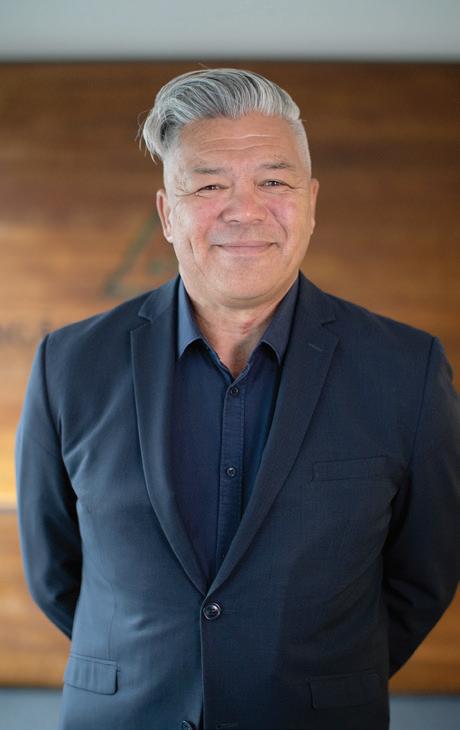
For an initial six months’, Te Tauraki has selected 36 organisations to provide 97 Whānau Ora Navigators across the region until year’s end.
A comprehensive Request for Proposal process is under way from 13 August to determine long-term Navigator services from next year.
In unison with our role as an Iwi Māori Partnership Board and Whānau Ora commissioning agency ultimately, we see hauora and whānau ora obligations extending to all 134,000 Māori living in Te Waipounamu, including our 47,000 registered Ngāi Tahu whānau, and we remain guided by our iwi values of manaakitanga and rangatiratanga.
Te Tauraki Board Chair Rakihia Tau acknowledges that while government funding reductions present challenges, they also create opportunities for more intensive whānau support.
However, Rakihia expresses concern about the proposed Healthy Futures (Pae Ora) Amendment Bill, describing it as “an assault on the Tiriti-based health reforms that took so long to achieve.”
The Bill’s repeal of Te Tiriti references strips away accountability mechanisms ensuring Māori health equity and undermines Māori health leadership, he says.
“We intend to make our voices heard through the Select Committee process. Our commitment to improving hauora outcomes for whānau continues to guide our work.”
Te Tauraki honours the legacy of previous work while establishing new leadership focused on whānau-centred care. For more information: whanau.ora@tetauraki.co.nz
Ngāi Tahu Tourism
Turn the Throttle on a Thrilling New Career We’re looking for our next generation of Ngāi Tahu jet boat drivers!
Undertake our comprehensive Jet Boat Driver Training Programme, getting paid while you learn.
Help us deliver world-class experiences to manuhiri from around the world, sharing stories of our Ngāi Tahu whenua and culture.
Work alongside an awesome team, thriving in a high-energy, outdoor environment with a full benefits and support package.


Opportunities available in Tāhuna Queenstown, Glenorchy, and Taupō To learn more and apply: https://mahi.ngaitahu.iwi.nz/jobdetails/ajid/6KSO7/ Jet-Boat-Driver-Kaiuruki-Waka-Dart-RiverAdventures,34456.html


Hear from One of Our Passionate Jet Boat Drivers ı Profile: Pieter Bulling – Shotover Jet
• Where were you born: Invercargill
• How long have you been a Shotover Jet driver? 8 years
• Most rewarding part of the job?
Driving a twin V8 jet boat down one of the most scenic rivers in the world. Interacting with people and showing off what Shotover is all about.
• What drew you to this mahi?
The amazing team at Shotover and being part of Ngāi Tahu.
• How does your whakapapa or upbringing influence your mahi?
It makes me proud to be working for my people and giving back to Ngāi Tahu.

• A moment on the job you’ll never forget? Training new drivers. I really enjoy watching them grow, develop new skills, and shine on the water.
• Something people might not know about the role? It’s mentally very hard—you have to be on the ball all the time. I look at it like being a race car driver: very high speeds while buzzing through a canyon inches away from rocks.
• How do you connect with the whenua when you’re out on the river?
I talk a lot about the history of Shotover, the boats, and how the operation works. People ask a lot of questions about the water and the landscape.
• What does it mean to represent Ngāi Tahu in this space?
A lot! It’s a great company to work for. I like knowing that my work helps Ngāi Tahu people and youth.
• How do you wind down after a day on the awa? Have a good chat with the crew once all the boats are put away over a drink. Then go home and spend time with my daughter.
• Advice for young Ngāi Tahu thinking about a career in tourism or adventure tourism? Do it! You learn a lot and it’s such a fun environment to be part of.
Shotover Jet 60th Anniversary
In August 2025, Shotover Jet marked a huge milestone – 60 years of adventure, connection and unforgettable memories on the awa. The celebrations were full of heart, with a special staff gathering, the release of a beautiful new documentary ‘Kimiākau – Sixty Years of Shotover Jet’, and some awesome giveaways like free rides for anyone turning 60 and surprise rides for those rocking the iconic red!
The events honoured the deep connection to the Kimiākau, the stories of those who helped build the legacy and the whānau who’ve made Shotover Jet what it is today. There were tears, laughter and pride as generations came together to see their stories brought to life on screen.
This wasn’t just a celebration of a company – it was a celebration of whakapapa, whenua and whānau. The documentary is a taonga, reminding us that our places of work and play are also places of deep meaning and mana.
Scan the QR code to watch the Shotover Jet 60th Anniversary documentary.

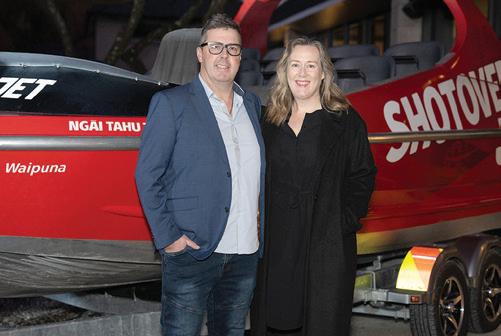


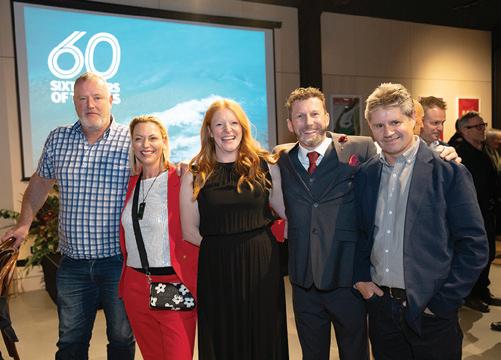





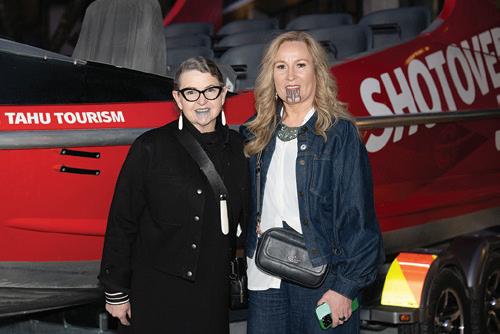












Pānui
Ngāi Tahu Nohoanga
Connect with the lands of your tīpuna Nohoanga are temporary campsites on Crown-owned land near waterways significant to Ngāi Tahu. Nohoanga provide all Ngāi Tahu whānau with an opportunity to experience the landscape as our tīpuna did, and to rekindle the traditional mahinga kai practices of gathering food and other resources.
Nohoanga are free to use and able to be booked using your whakapapa number. The season runs from 16 August to 30 April each year.
Two new nohoanga opened in March 2025. Lake Ōhau in the McKenzie District and McNulty Arm in Cromwell.

To view all nohoanga sites, visit Ngaitahu.iwi.nz and look under Opportunities and Resources for a map showing nohoanga locations and downloadable information sheets for each site.
We value whānau feedback as it helps us manage the nohoanga by making us aware of any maintenance issues. We also love hearing stories about how whānau utilise the different sites.
As a thank you, all feedback entered goes into a draw to win a Hunting & Fishing voucher at season’s end.
Congratulations to Hamish Jenkins, last season’s lucky winner!
For more information about available sites and to book online, please visit our webpage: https://ngaitahu.iwi.nz/opportunities-and-resources/ for-whanau/nohoanga/ or get in touch with us on 0800 NOHOANGA (0800 664 62642) or email nohoanga@ngaitahu.iwi.nz
The
Mawhera
Incorporation –Unclaimed Dividends
The Mawhera Incorporation has a considerable amount of funds held in unclaimed dividends.

You, a whānau member or someone you know, might be entitled to these dividends and we would really appreciate your help in locating missing owners or their next of kin. If you are able to provide any information that will help to distribute unclaimed dividends to their owners please contact Rachel Scott on admin@mawhera.org.nz or 03 964 7203.
Succession to estates
In the case of estates, when a landowner dies, it is important to transfer his or her Māori land shares and interests to the person(s) entitled to receive those interests. They are called the successors and the process is called succession.
To legally transfer the land interests of a deceased person to his or her successors, a succession order is normally issued by the Māori Land Court. The person(s) entitled to receive the interests in Māori land are set out in sections 108 and 109 of the Te Ture Whenua Māori Act 1993.
It is a legal requirement to provide a detailed account of your whakapapa to validate your interest in the transfer of all shares.
To learn more about the succession process or to download an application form please visit https://www.maorilandcourt.govt.nz/your-maori-land/ succession/
Get in touch and stay in touch.
Remember that if you keep our office up-to-date with your shareholder details, you will always receive funds when payment is due.
Tautuku Blk X Sec 3C Trust –General Meeting
Date: 11 October 2025
Venue: McKerrow Lounge, Mosgiel Presbyterian Church, 11 Church Street, Mosgiel
Electronic attendance will be provided for.
Time: 9.30am
Agenda
– Trustees report on status of the trust and the land – Financial report – New Trust Order approval – Appointment of new trustees (3-5 required) – Optional field visit to the section the following day
Contact
View the trust’s website TAUTUKUX3C.NZ for the full agenda, applicable processes, registering for online attendance and catering purposes.
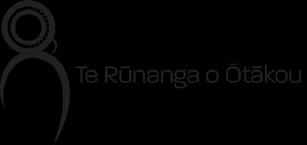
Te Rūnanga ō Ōtākou Inc 45 Tamatea Road, Ōtākou RD2 Otago Peninsula Dunedin 9077
Te Rūnanga ō Ōtākou Inc
45 Tamatea Road Ōtākou
RD2 New Zealand
Te Rūnanga o Ōtākou Appointment Committee Election Process
Opens 2nd July 2025
As no applications were received the komiti will consider extraordinary support to the Ōtākou Church roof retiling project and maintenance as it progresses.
For 2026 there is $5,800.00 to distribute
SEEKING NOMINATIONS FOR THE ŌTĀKOU APPOINTMENTS COMMITTEE
Kia ora koutou, ka Rūnaka south of the Waitaki: Te Rūnanga ō Moeraki; Kāti Huirapa Rūnaka ki Puketeraki; Hokonui Rūnanga; Waihōpai Rūnaka; Ōraka Aparima Rūnaka; Te Rūnaka o Awarua; Te Rūnanga ō Ōtākou.
The Appointment Committee will be responsible for appointing Te Rūnanga o Ōtākou Te Rūnanga o Ngāi Tahu (TRoNT) Representative and Alternate Representative for the next three year term. This committee will be made up of seven (7) registered Rūnaka members. We are:
There is only one funding round per year with five categories that can be selected: wairua/religious studies, culture and heritage needs, maintenance of rūnaka church buildings and upkeep of urupa. The kōmiti may offer two categories each year on a rotating basis and make up to two grants per funding round.
• seeking nominations from Otakou Rūnaka members to be on the Appointment Committee;
Pānui: Methodist Pūtea Grant 2026 is now open as at 1st September 2025
Invitation to make an application to the Methodist Pūtea Grant 2026
• inviting all members of Ngāi Tahu Whānui who have established by whakapapa their eligibility to register with Te Rūnanga o Ōtākou.
The nominees shall meet the following criteria:
The Methodist Pūtea Grant 2026 is now open for applications to projects being undertaken by Kāi Tahu rūnaka, whānau and individuals with a focus on the heritage needs of the iwi.
This year one category is being offered:
Category 5
(i) must be over 18 years of age and registered members of Te Rūnanga o Ōtākou;
Historical Background
The Methodist Pūtea Grant came into effect as a result of the historical and significant relationship that exists between Kāi Tahu whānau and Te Hāhi o Weteriana, the Methodist Church NZ. (MCNZ). This is especially so at Ōtākou, when in the 1990s the Methodist Church returned ownership of the Ōtākou Memorial Church to Te Rūnanga ō Ōtākou (Ōtākou) and made a koha of $210,000 arising from the proceeds of the sale of property at Kawarau Falls. This capital asset is protected and income generated from investment is administered by the Methodist Pūtea Komiti and applied to grants that will benefit Kāi Tahu rūnaka, whānau and individuals.
(ii) must have demonstrated active participation in Te Rūnanga o Ōtākou for a minimum of one (1) year, by regular attendance at Rūnanga meetings, or regular participation in Rūnanga affairs; and
To provide financial assistance to support the heritage needs of the iwi. The nature and extent of these needs to be identified through research and the funding applied to specific initiatives.
Who can apply:
(iii) must not be a current TRoNT Representative or Alternate Representative, if reapplying.
Nomination forms are available from the Ōtākou office, 03 478 0352 / office@tro.org.nz
Nominations must be received at the Ōtākou office by 12pm 6th August 2025 No late nominations will be received
1. Kāi Tahu rūnaka located south of the Waitaki: Te Rūnanga ō Moeraki; Kāti Huirapa Rūnaka ki Puketeraki; Hokonui Rūnaka; Waihōpai Rūnaka; Ōraka Aparima Rūnaka; Awarua Rūnanga; Te Rūnanga ō Ōtākou.
Addressed to: Att Operations Manager, Re Appointments; Te Rūnanga o Ōtākou, 45 Tamatea Road, Ōtākou RD2, Dunedin 9077; or by email: Bridget@tro.org.nz
2. Whānau, Individual applications shall be considered from Kāi Tahu members affiliated with any of the above rūnaka and must be endorsed in writing by their rūnaka.

The Methodist Pūtea Komiti
The komiti is currently made up of members from Ōtākou and Puketeraki kā rūnaka, and a member of the Methodist Church in Dunedin. The komiti has the discretionary right to make final decisions on merit, and reports to the AGM of Ōtākou and Puketeraki. The komiti meets each April to administer the grants process. All applicants are informed that their application has been received and are notified of the outcome. Grant payments are made by 30 June of the same year. An unsuccessful applicant may reapply in the future when an appropriate category is offered.
Tel: 03 478 0352 www.otakourunaka.co.nz
The komiti commenced in 2004 and to date has granted a total amount of $116,264.50. In the 2025 round, the komiti had funds of $9000.00. A standing grant of $1000 is made to the upkeep of the Ōtākou Church.
Applications close 12 noon 31 March 2026
Please contact our office for the application form. Details below.
Email: office@tro.org.nz
Return applications to Te Rūnanga o Ōtākou, Att: Methodist Pūtea Komiti, address below, or scan/email the office administrator (Ruth Greer). We look forward to receiving your application.
Thank you.
No reira, Nāhaku noa, nā, Andrew Rouvi, Chief Executive Officer, Te Rūnanga o Ōtākou

Take a look inside this year’s Annual Report to 31 March 2025. It includes kōrero from the Whai Rawa Fund Limited Chair, Anthony Bow and Te Rūnanga o Ngāi Tahu Kaiwhakahaere, Justin Tipa.
“Whai Rawa is more than a savings scheme; it is a living expression of our commitment to intergenerational wellbeing.”
Te Rūnanga o Ngāi Tahu Kaiwhakahaere, Justin Tipa


Request a copy from us today at whairawa@ngaitahu.iwi.nz


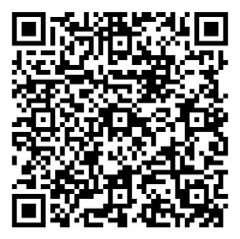
What is currently open now and what is coming up?
Name of Grant/Fund Opens Closes
Learner Support Grant Term 4 Now 22 September
Ngāi Tahu Fund Now 30 September
Kā Pūtea Grant Now 1 November
Special Learner Assessment Grant Open all year round
Pēpi Pack Open all year round
Taiawatea – Rangatahi Cultural Leadership Find Open all year round
If you are eligible for the Kaumātua Grant and have not received any communication regarding it by the end of September, please get in touch with us at kaumatua@ngaitahu.iwi.nz


Rūnaka Directory
Te Taumutu Rūnanga
Ph: 03 371 2660
E: taumutu@ngaitahu.iwi.nz
Te Hapū o Ngāti Wheke
Ph: 03 328 9415
E: rapaki@ngaitahu.iwi.nz
Te Rūnanga o Koukourarata
Ph: 03 339 8308
E: koukourarata@ngaitahu.iwi.nz
Wairewa Rūnanga
Ph: 03 377 1513
E: wairewa@ngaitahu.iwi.nz
Ōnuku Rūnanga
Ph: 03 381 2082
E: onuku@ngaitahu.iwi.nz
Te Rūnanga o Makaawhio Ph: 03 755 7885 E: makaawhio.admin@ngaitahu.iwi.nz
Ōraka Aparima Rūnaka
Ph: 03 234 8192 E: office@orakaaparima.org.nz
Awarua Rūnanga
Ph: 03 212 8652 E: office@awaruarūnaka.iwi.nz
Taurahere Rōpū
Ngāi Tahu ki Te Taitokerau
Janet Hetaraka
Ph: 09 438 6203
E: janet@hihiaua.org.nz
Ngāi Tahu ki Tāmaki Makaurau
Briar Meads
Ph: 027 929 9992
E: ngaitahutamakimakaurau@gmail. com
Ngāi Tahu ki Rotorua
Anita Smith
Ph: 07 345 8375
E: Anita17smith@gmail.com
Ngāi Tahu ki Tauranga Moana
Rachel Chaney
Ph: 021 129 3665
E: ngaitahukitaurangamoana@ gmail.com
Ngāi Tahu ki Te Matau a Māui
Lisa Walker
Ph: 021 196 3009
E: lisa1.walker31@gmail.com
Kāti Huirapa Rūnaka ki Puketeraki Ph: 03 465 7300 E: admin@puketeraki.nz
Hokonui Rūnanga Ph: 03 208 7954 E: hokonui.office@ngaitahu.iwi.nz
Ngāi Tahu ki Whanganui
Aroha Beckham
Ph: 021 687 6332 E: aroha.beckham@xtra.co.nz
Ngāi Tahu ki Horowhenua – Kapiti Coast
Amokura Carkeek E: amokura.carkeek@tworotaki. ac.nz
Ngāi Tahu ki Taranaki
Virginia Hina
Ph: 021 135 3493
E: gin_1_98@live.com
Ngāi Tahu ki Whakatāne
Phil Kemp Ph: 027 478 2919 E: ptkemp@xtra.co.nz
For contributions to Te Pānui Rūnaka, email:
tpr@ngaitahu.iwi.nz or phone: 0800 524 8248
For photographs and graphics please send to: Te Rūnanga o Ngāi Tahu PO Box 13-046, CHRISTCHURCH ISSN 1175-2483 (Online: ISSN 2357-2051) Opinions expressed in Te Pānui Rūnaka are those of the writers and not necessarily endorsed by Te Rūnanga o Ngāi Tahu.
Kaikōura Rūnanga Ph: 03 319 6523 E: takahanga.office@ngaitahu.iwi.nz
Ngāti Waewae Rūnanga Ph/fax: 03 755 6451 E: admin@ngatiwaewae.org.nz
Te Ngāi Tūāhuriri Rūnanga Ph: 03 313 5543 E: tuahiwi.marae@ngaitahu.iwi.nz
Te Rūnanga o Arowhenua Ph: 03 615 9646 E: arowhenua.admin@ngaitahu.iwi.nz
Te Rūnanga o Waihao Ph: 03 689 4726 E: waihao.manager@ngaitahu.iwi.nz
Te Rūnanga o Moeraki Ph: 03 439 4816 E: moeraki.rūnanga@ngaitahu.iwi.nz
Te Rūnanga o Ōtākou Ph: 03 478 0352 E: office@tro.org.nz
Waihōpai Rūnaka Ph: 03 216 9074 E: info@waihopai.org.nz
Ngāi Tahu ki Whanganui-a-Tara
Karen Coutts Ph: 027 365 3993 E: karen.coutts@xtra.co.nz
Ngāi Tahu ki Wairau
Ana Topi Patuki Ph: 022 369 1024 E: ruapuke@hotmail.com
Ngāi Tahu ki Te Tairāwhiti Vernice Waata-Amai Ph: 027 263 6921 E: vernice.w.amai@xtra.co.nz
Kāi Tahu ki Te Urupū (Perth) E: ngaitahuinperth@gmail.com
Facebook: Ngāi Tahu ki Perth
Ngāi Tahu ki Melbourne
Haileigh Russell-Wright Ph: (04) 5820 2227 E: ladyhailz@gmail.com
Ngāi Tahu ki Waikato Hinga Whiu Ph: 0211811009 E: hinga.whiu@tainui.co.nz
Ngāi Tahu ki Wairarapa
Karen Bast Ph: 06 378 8737 E: maungateitei_hikurangi_ aorangi@yahoo.co.nz
Ngāi Tahu ki Waikawa
Marama Burgess Ph: 03 5736142 or 0276591840 E: mr.burgess@hotmail.com
Te Kupeka a Tahu (Brisbane) Ph: 0488666610 (+61) E: tekupekaatahu@gmail.com
Ngāi Tahu iwi i Poihākena Angeleau Simpson Ph: 04 20333568 E: angeleanlivs@y7mail.com
Whakaahua Tīpuna/Whānau

This image was taken by Jan Shuttleworth in 1978 at a function for the centenary of Ōnuku Church. We would like to identify the three young ladies on the right.
Left to right: Ka Daniels, Riki Te Mairaki Ellison, Montero Daniels, Unidentified x 3.
If you are able to help us with further information or can identify anyone in the image that is not yet named, please contact Robyn Walsh in the Ngāi Tahu Archives unit on 0800 Kāi Tahu (0800 524 8248), we would love to hear from you.
